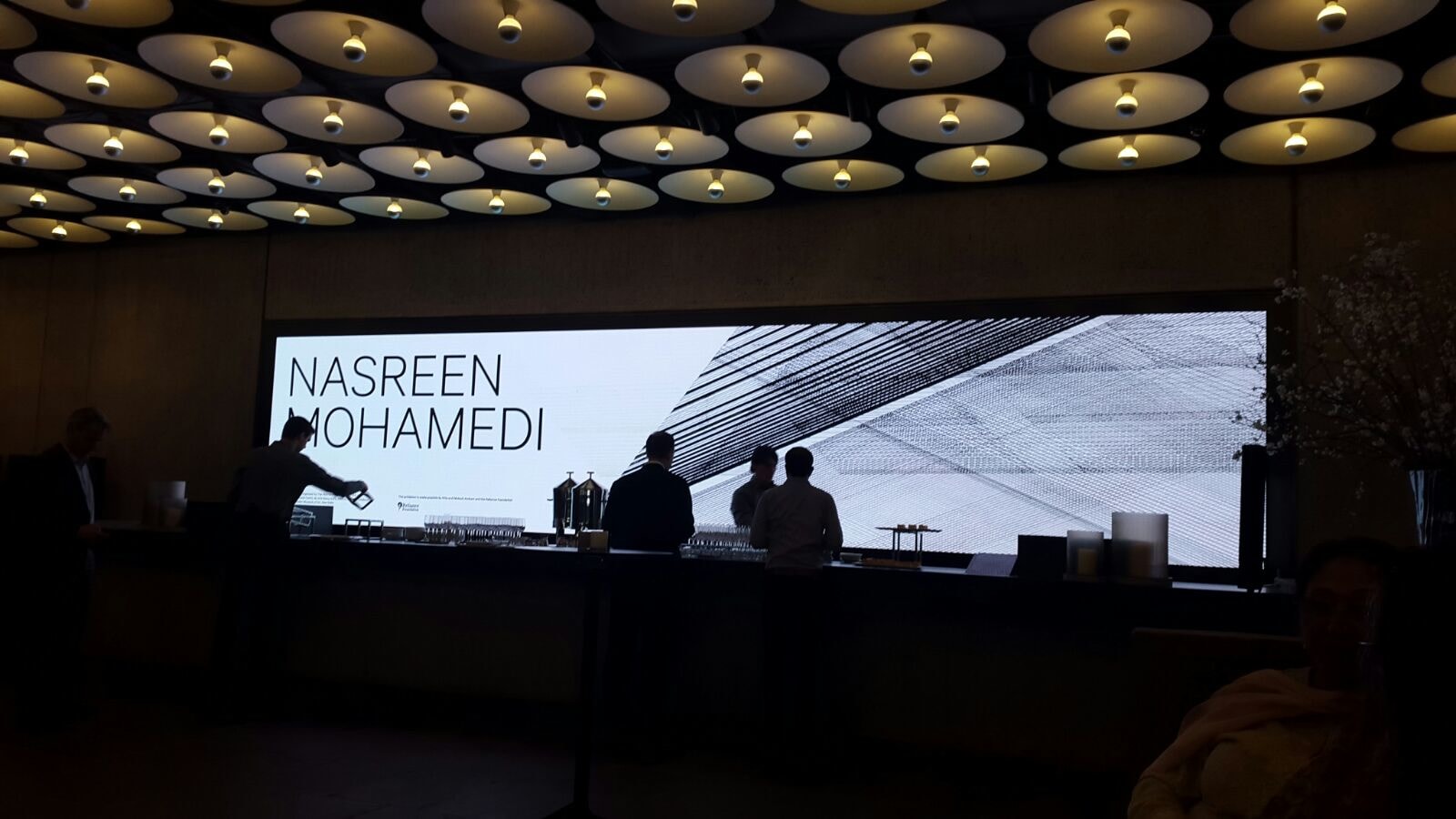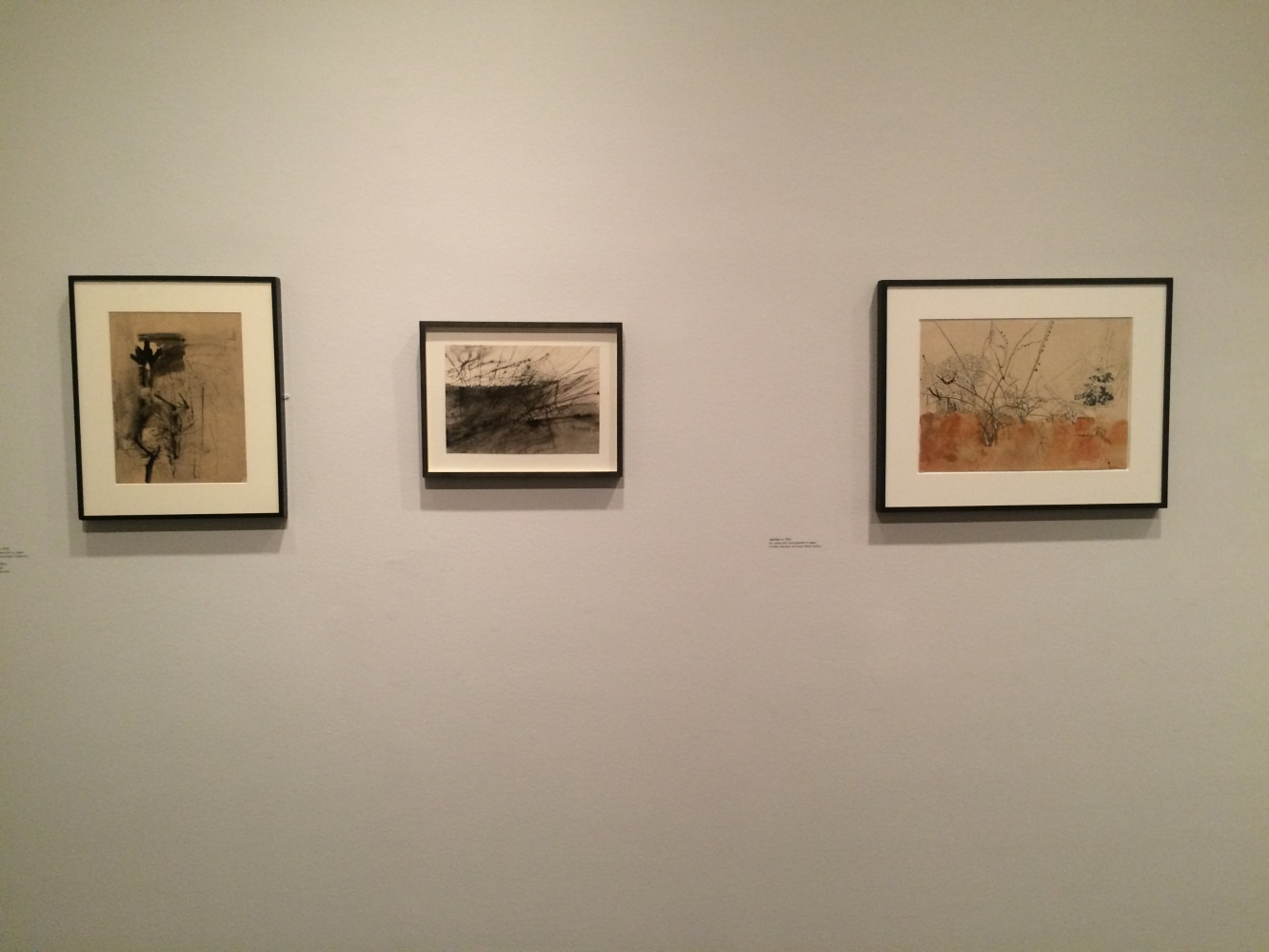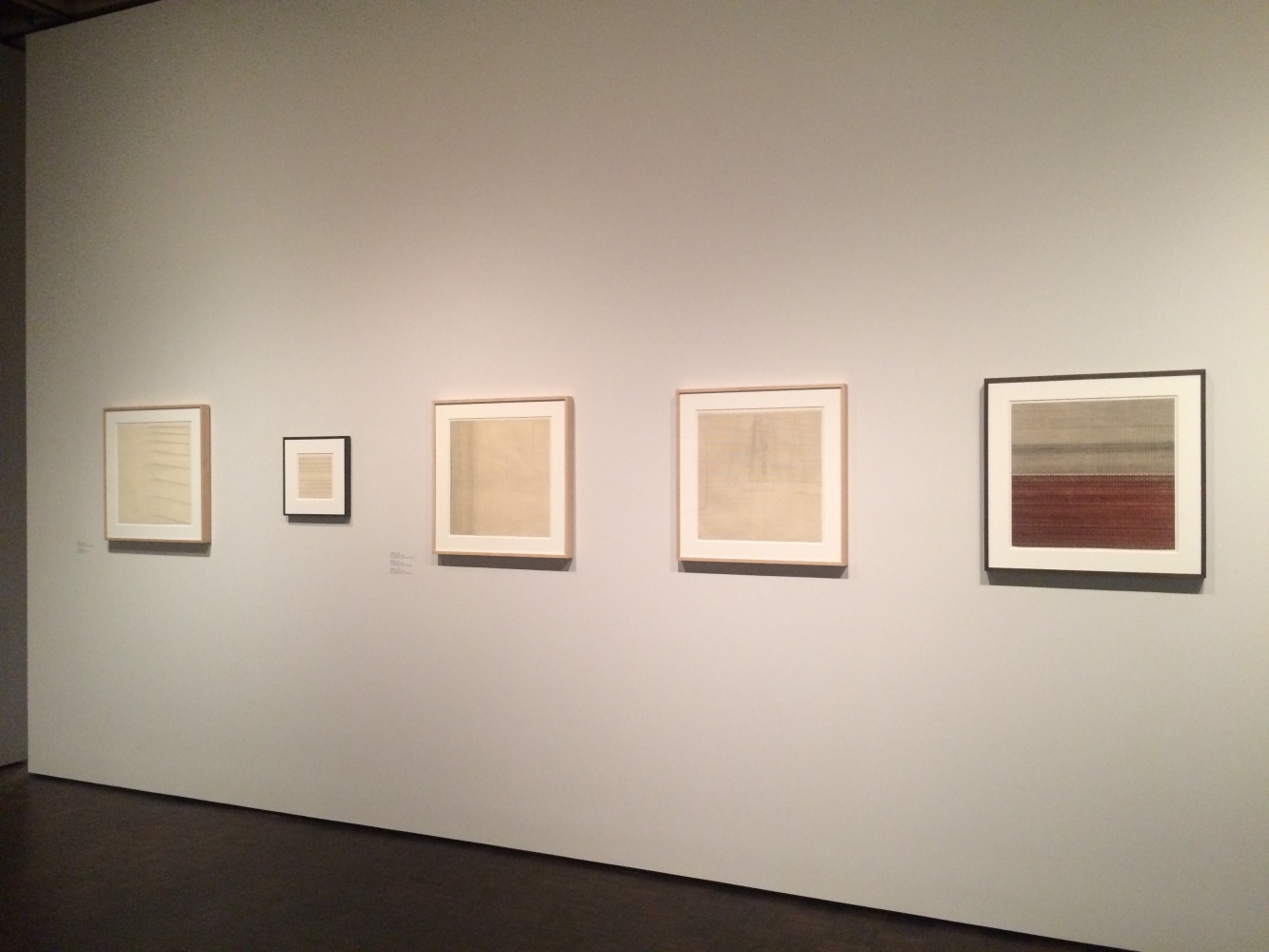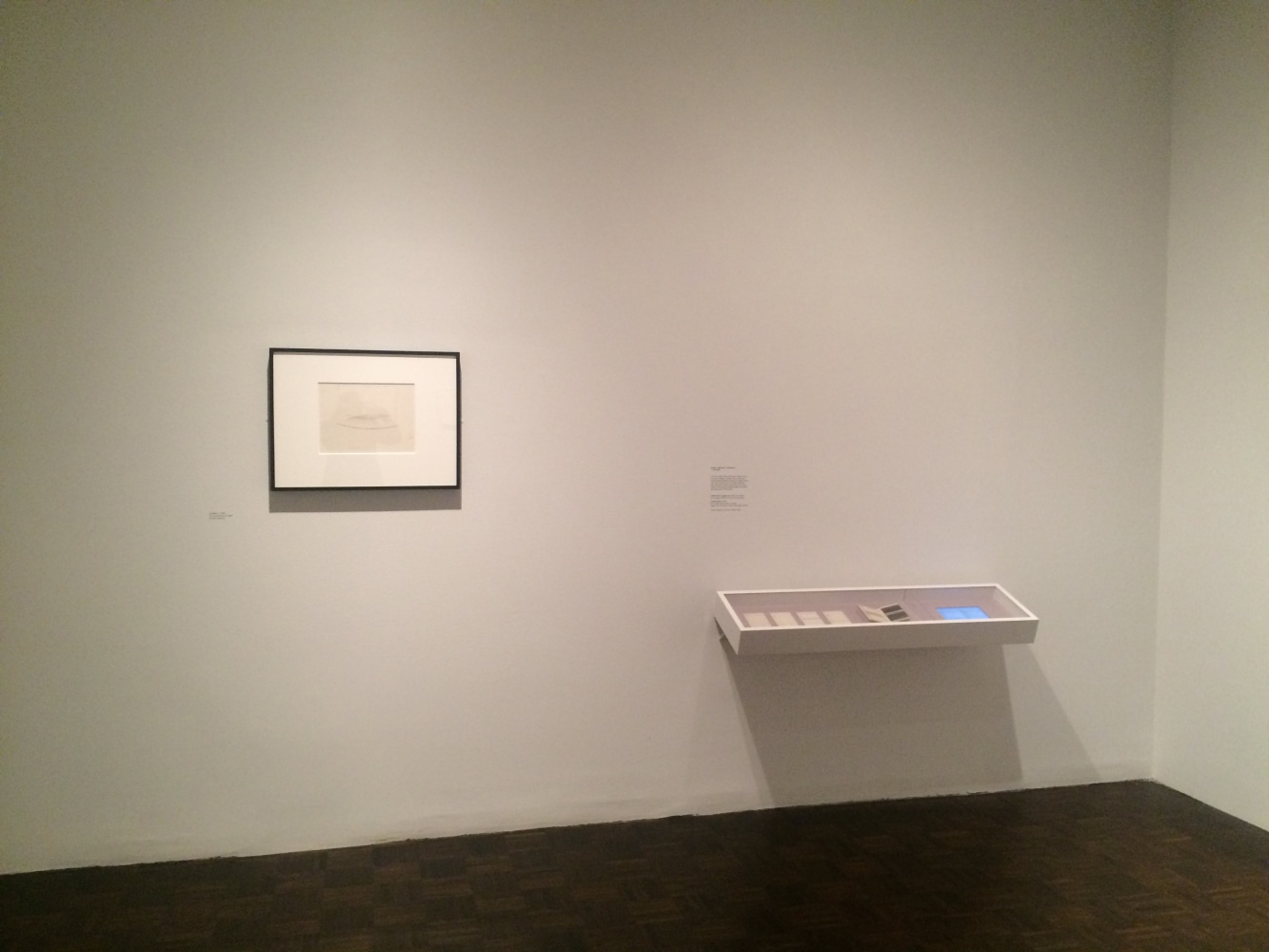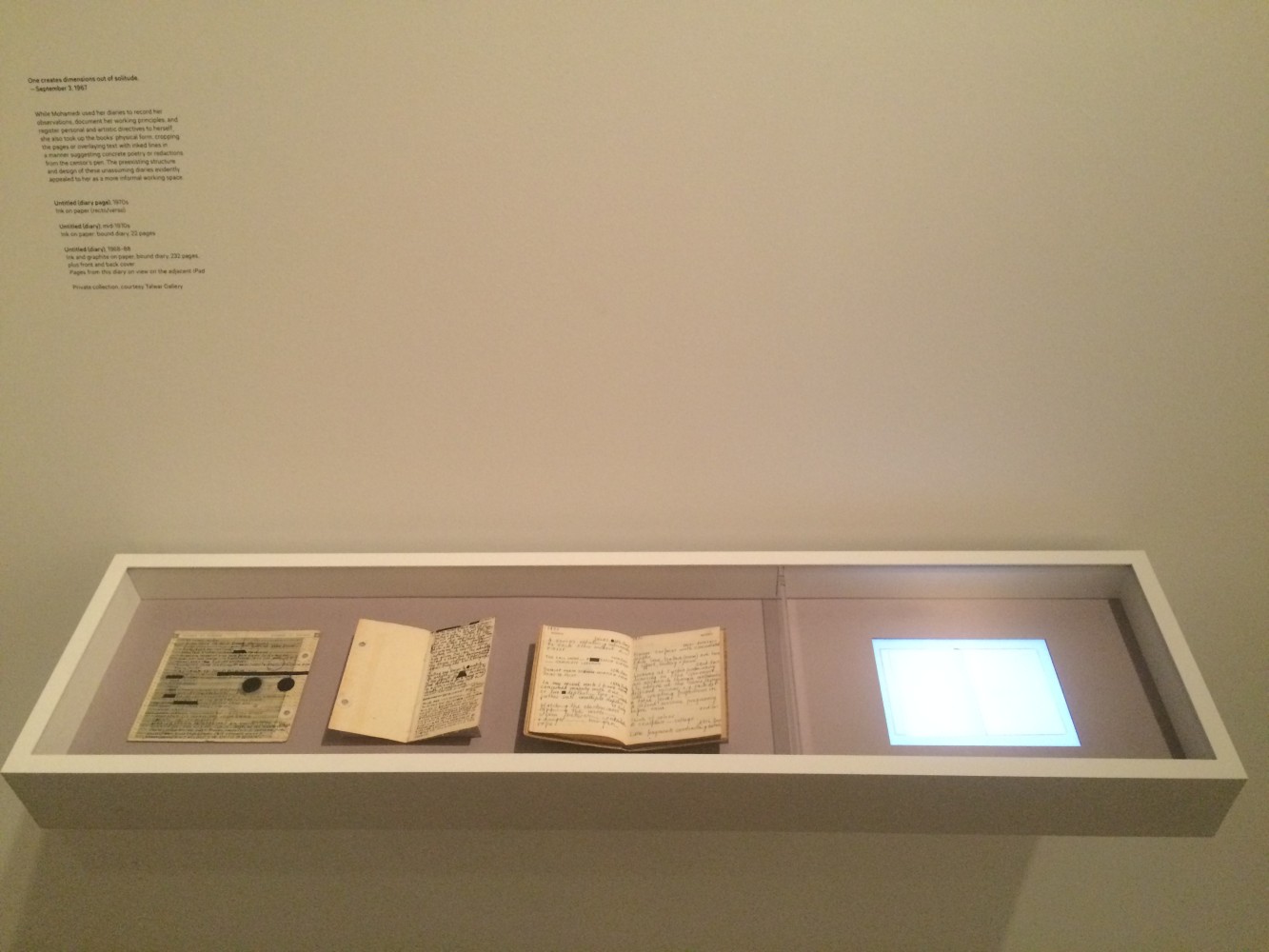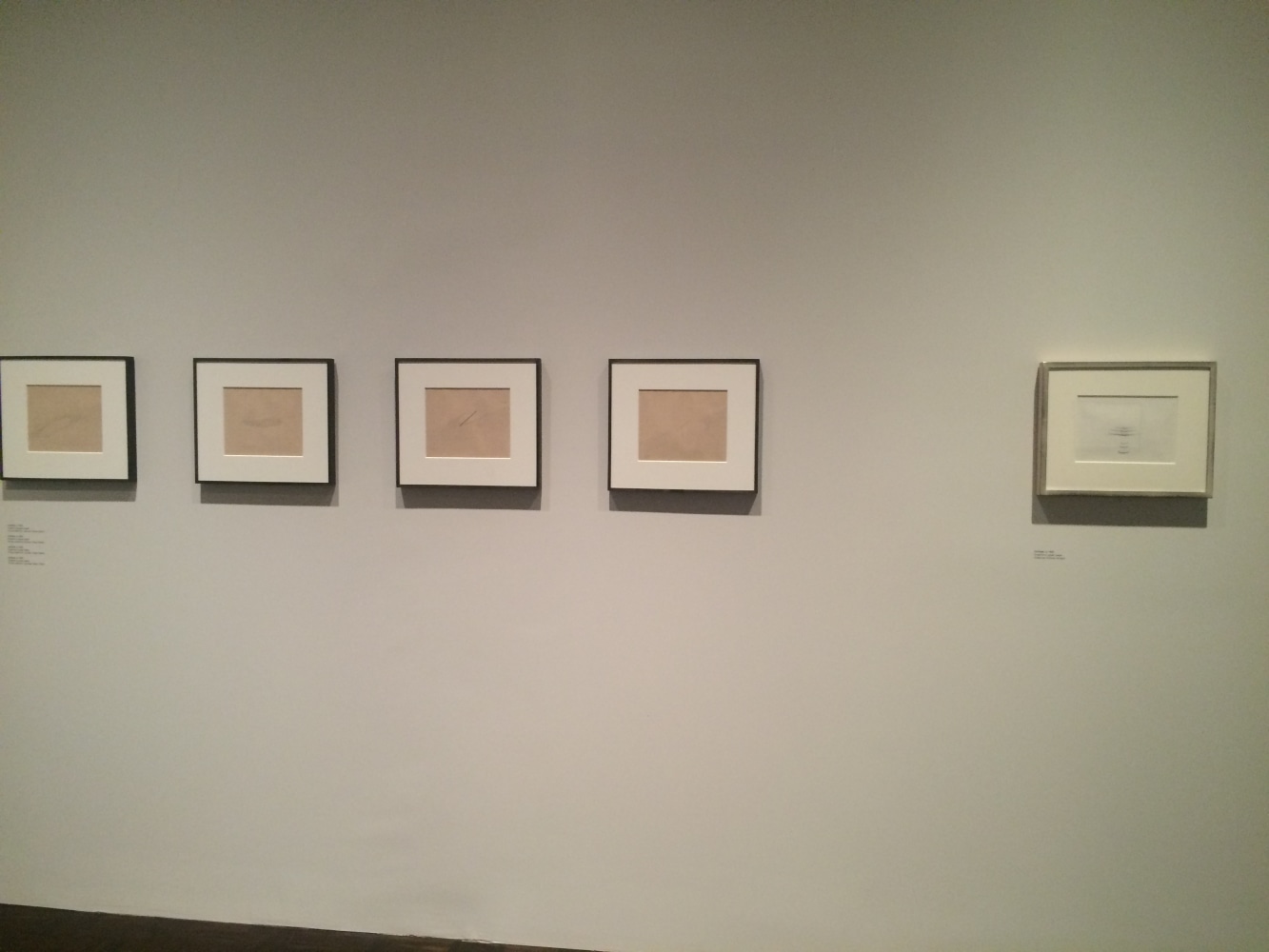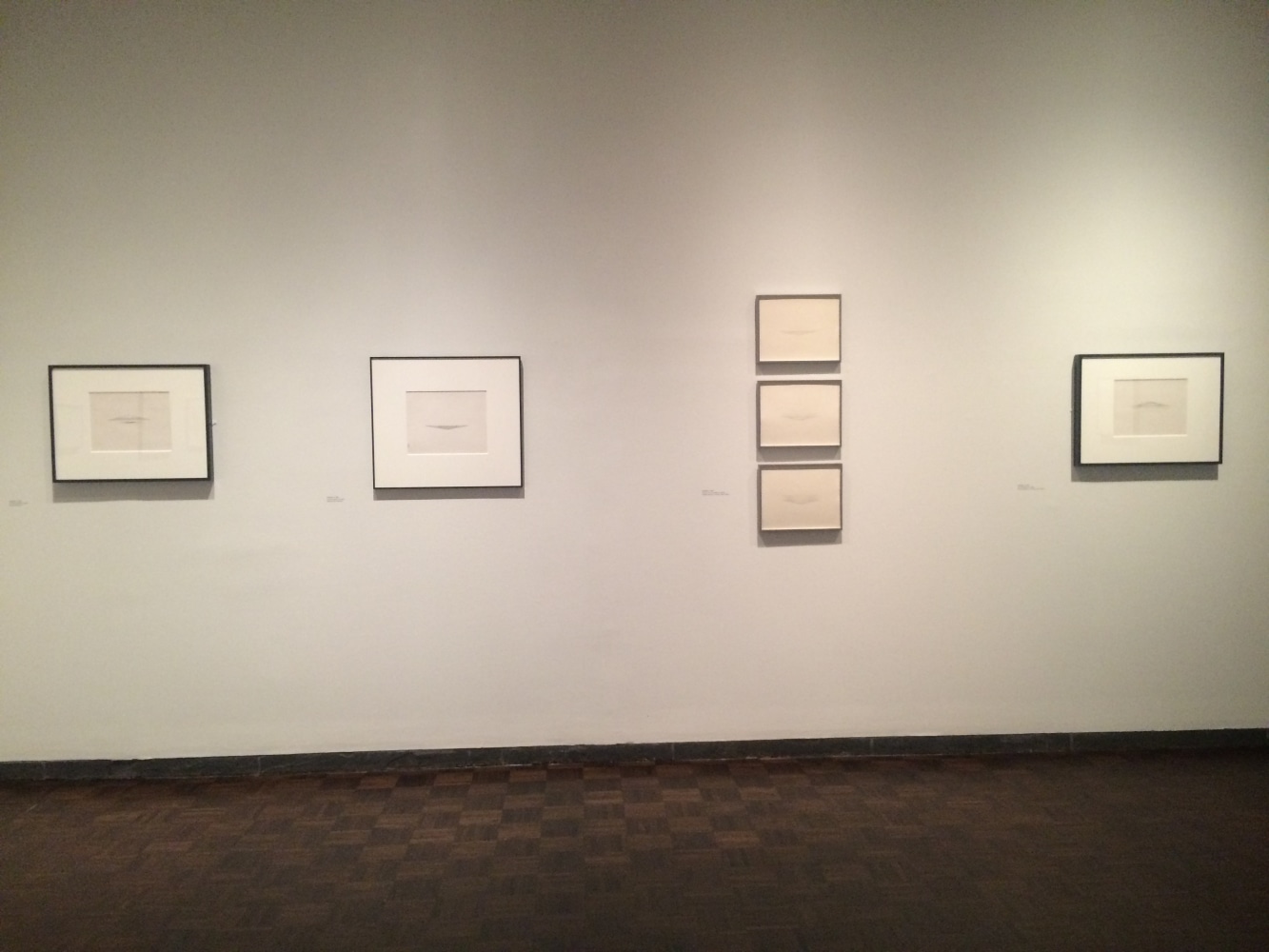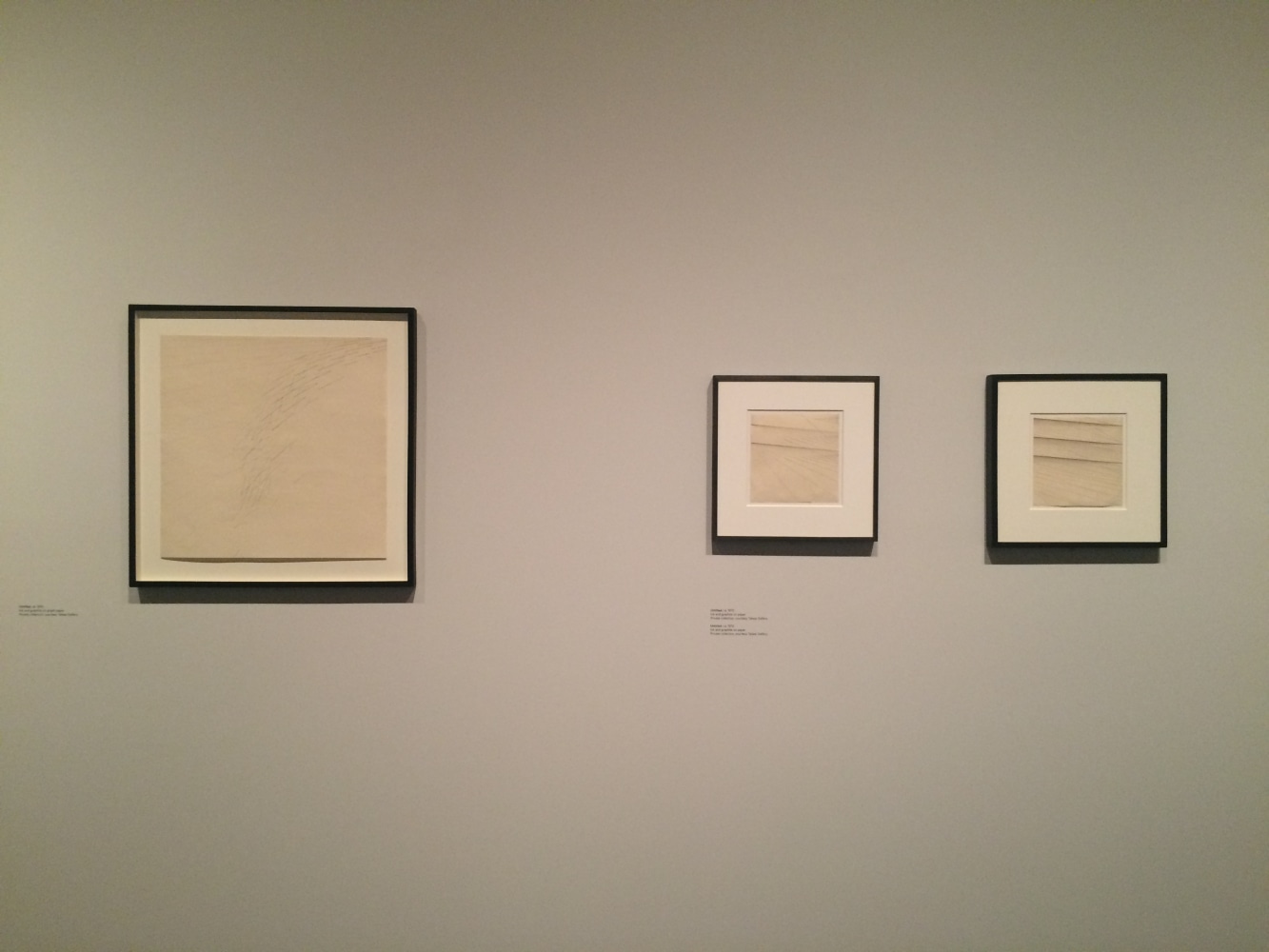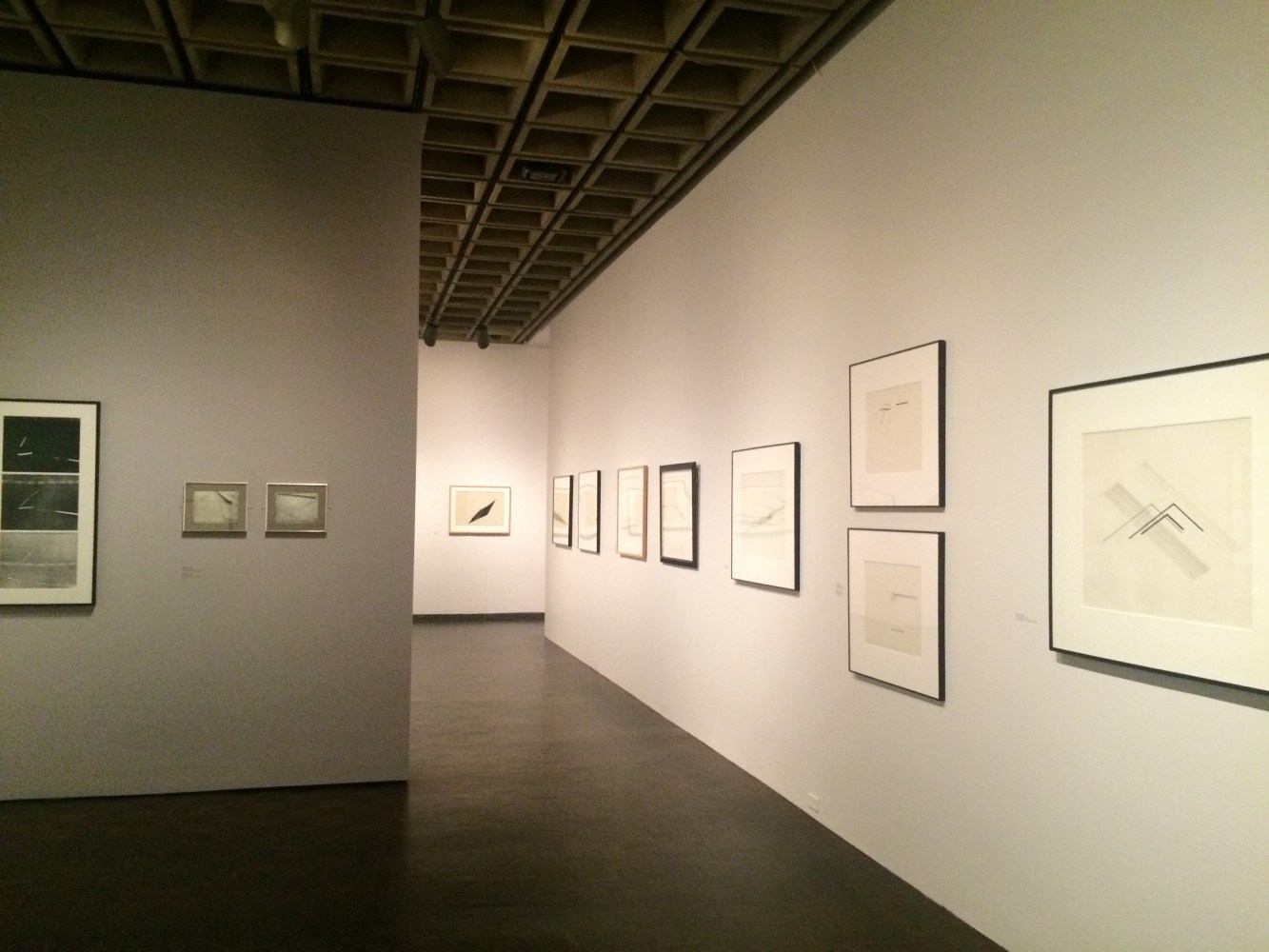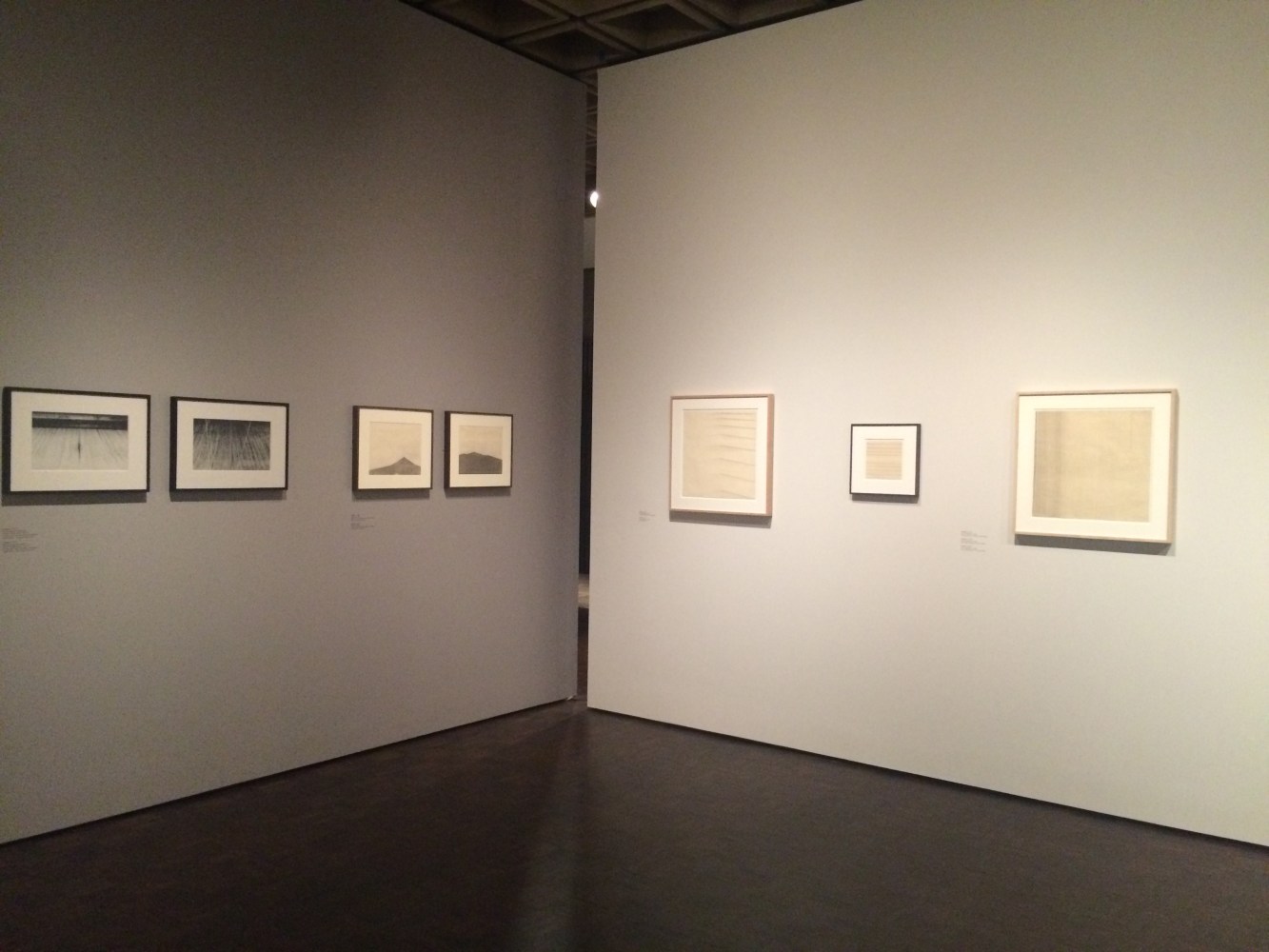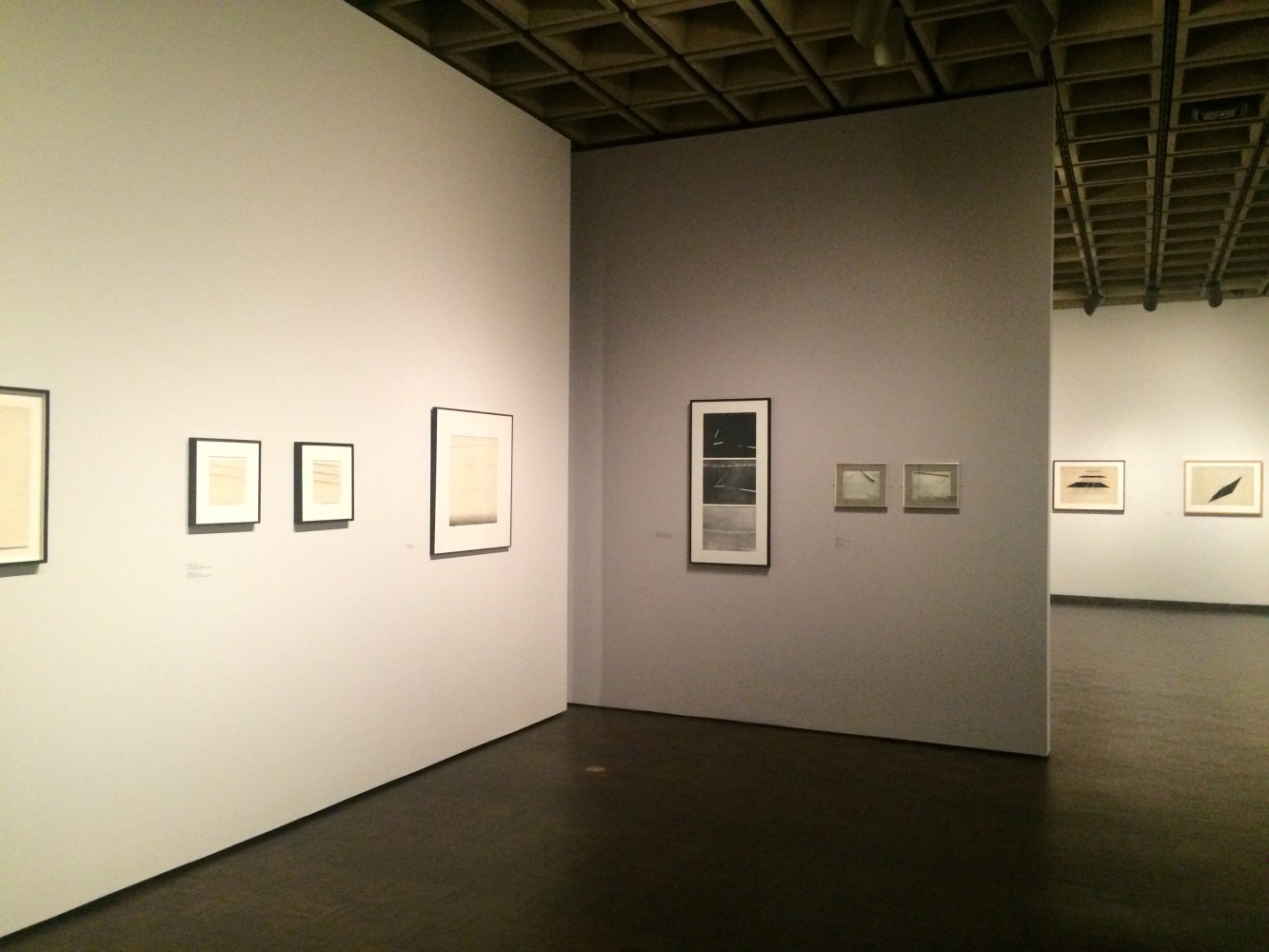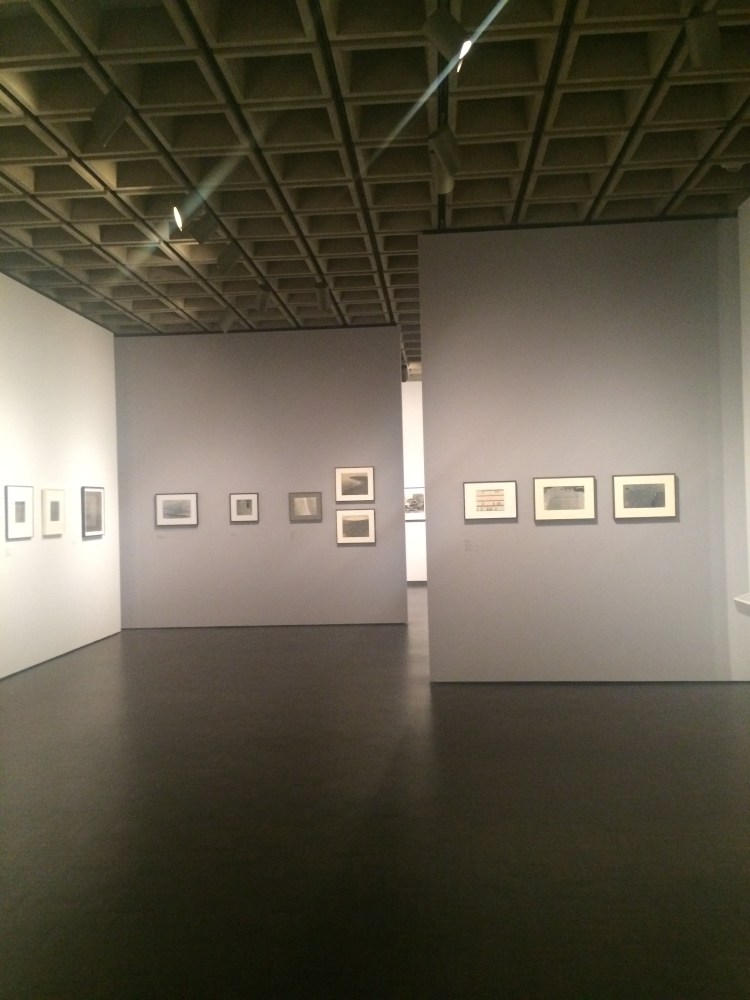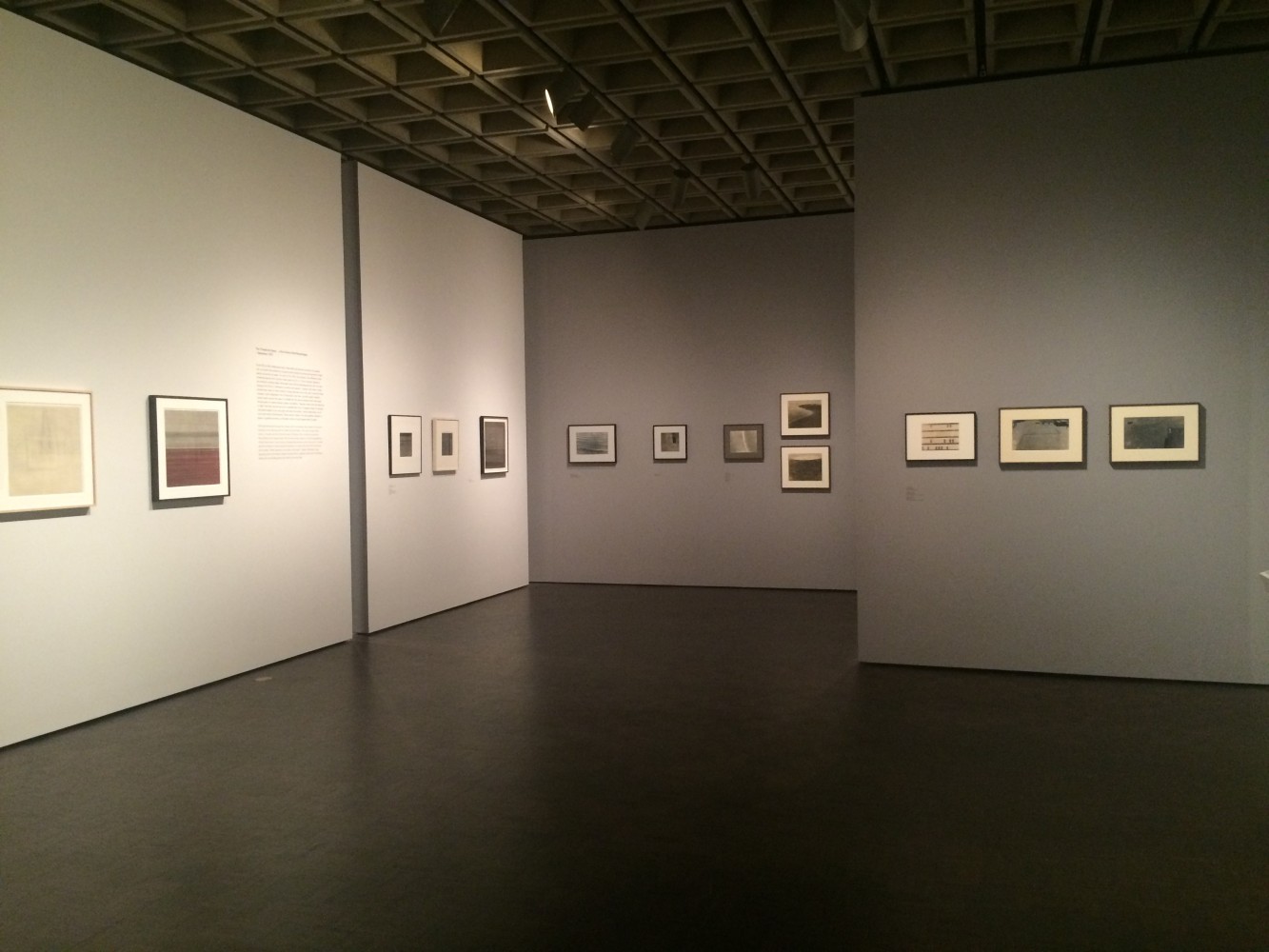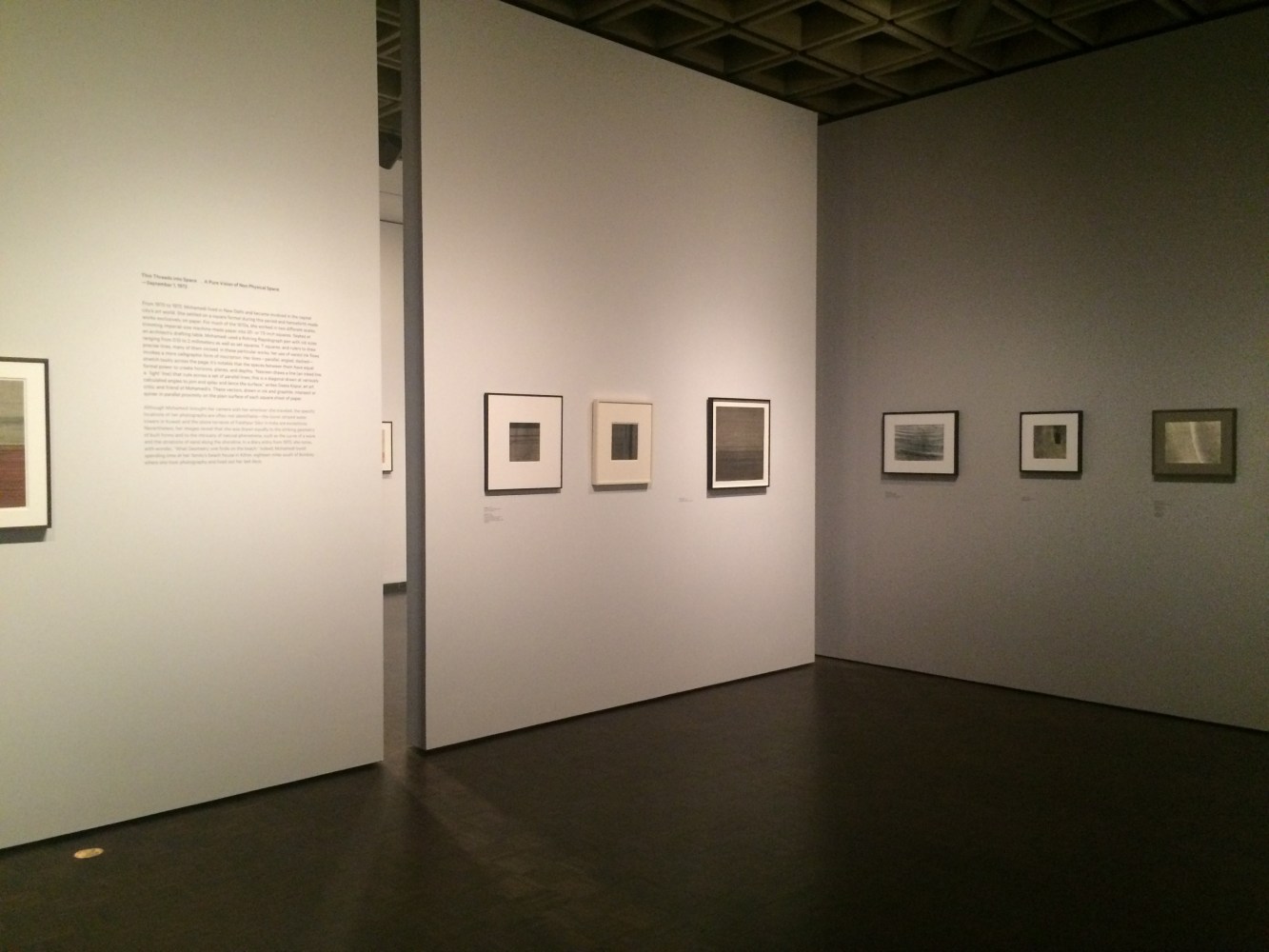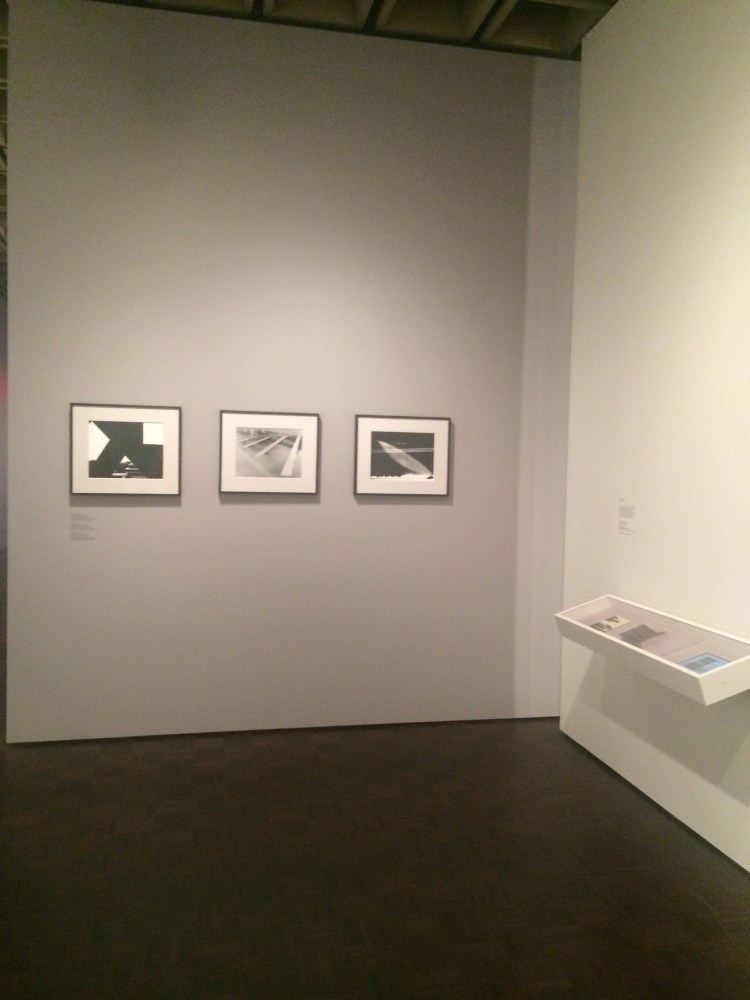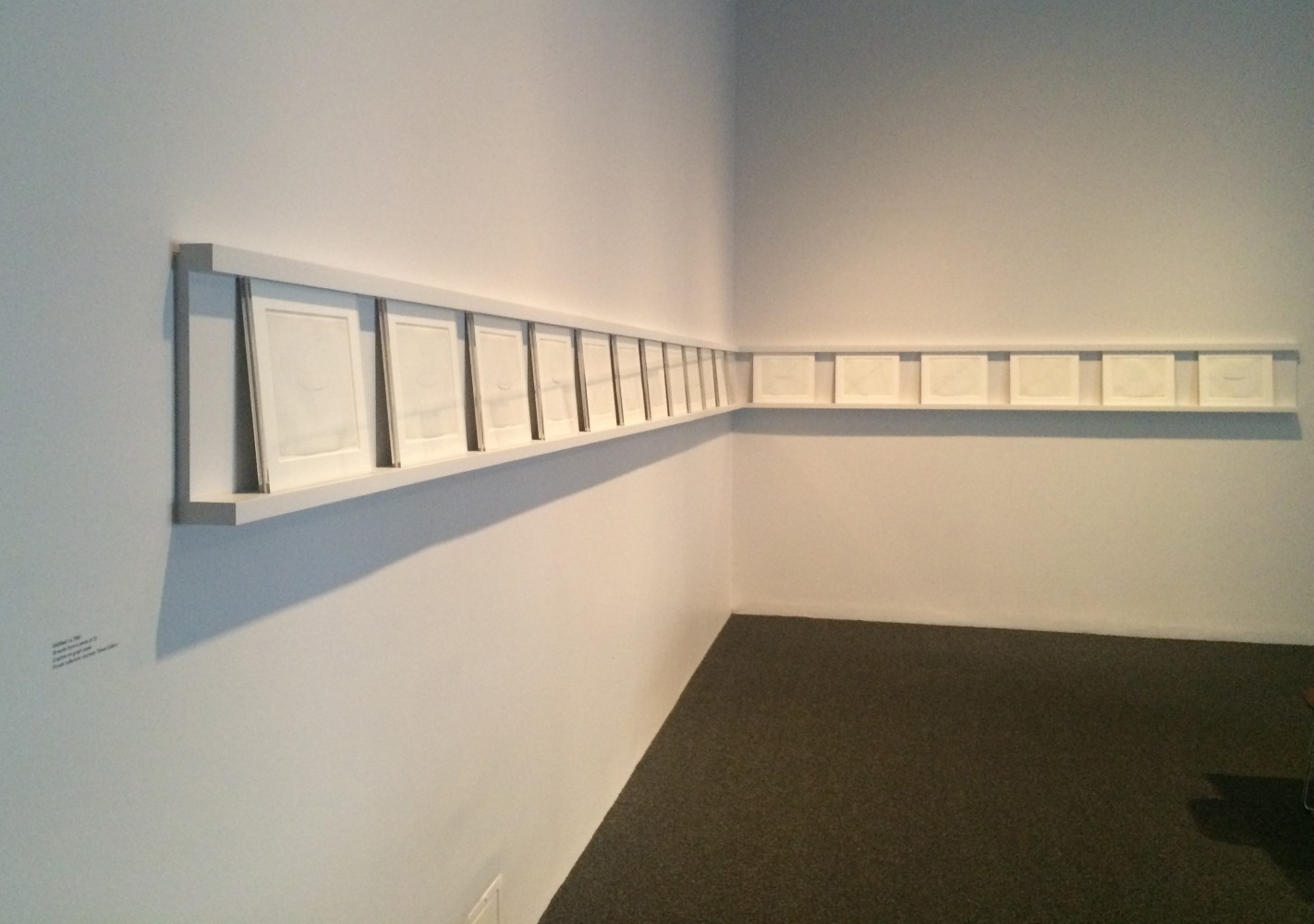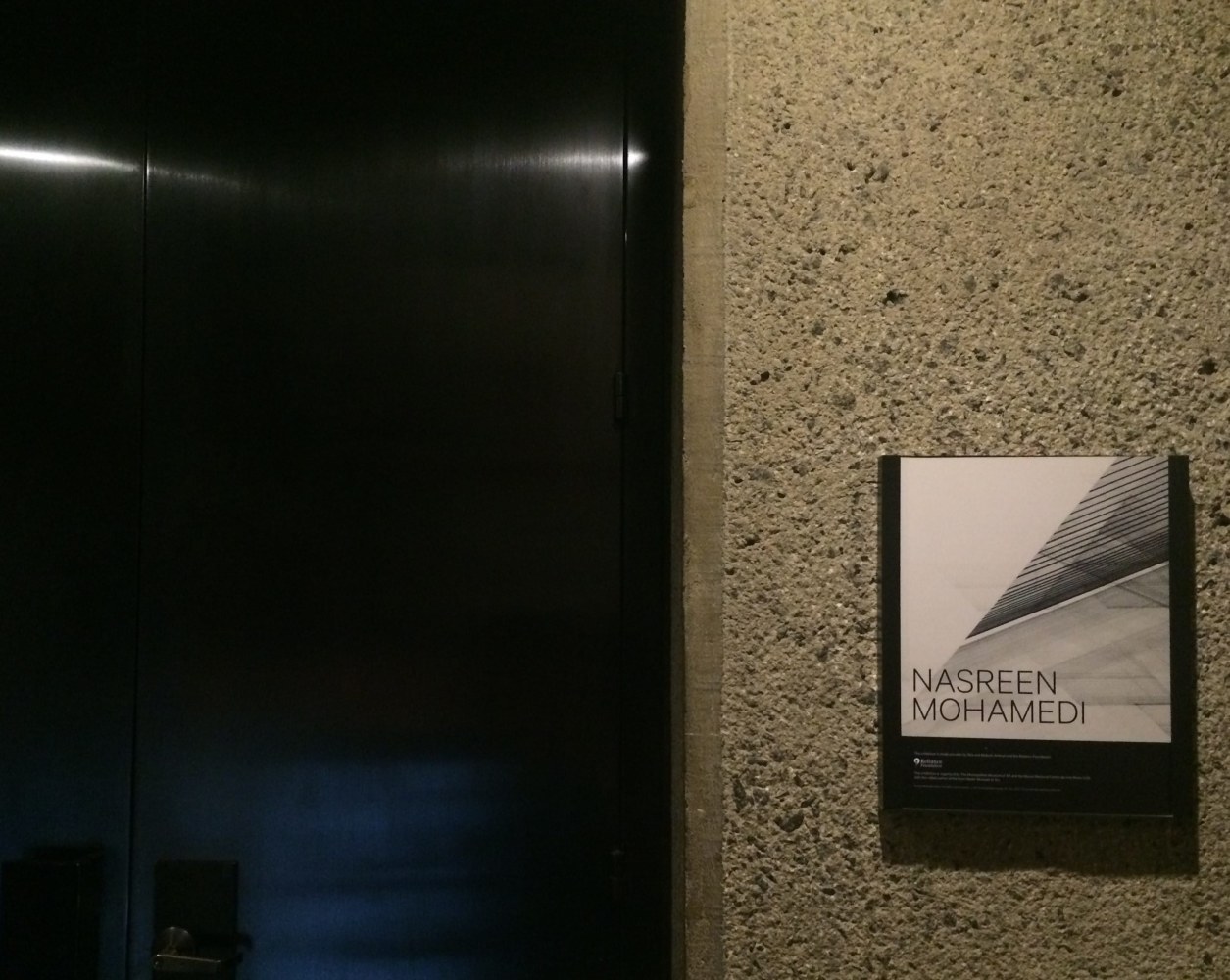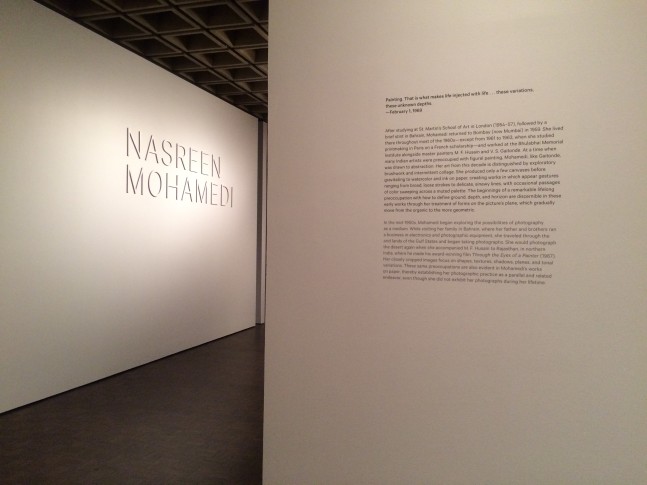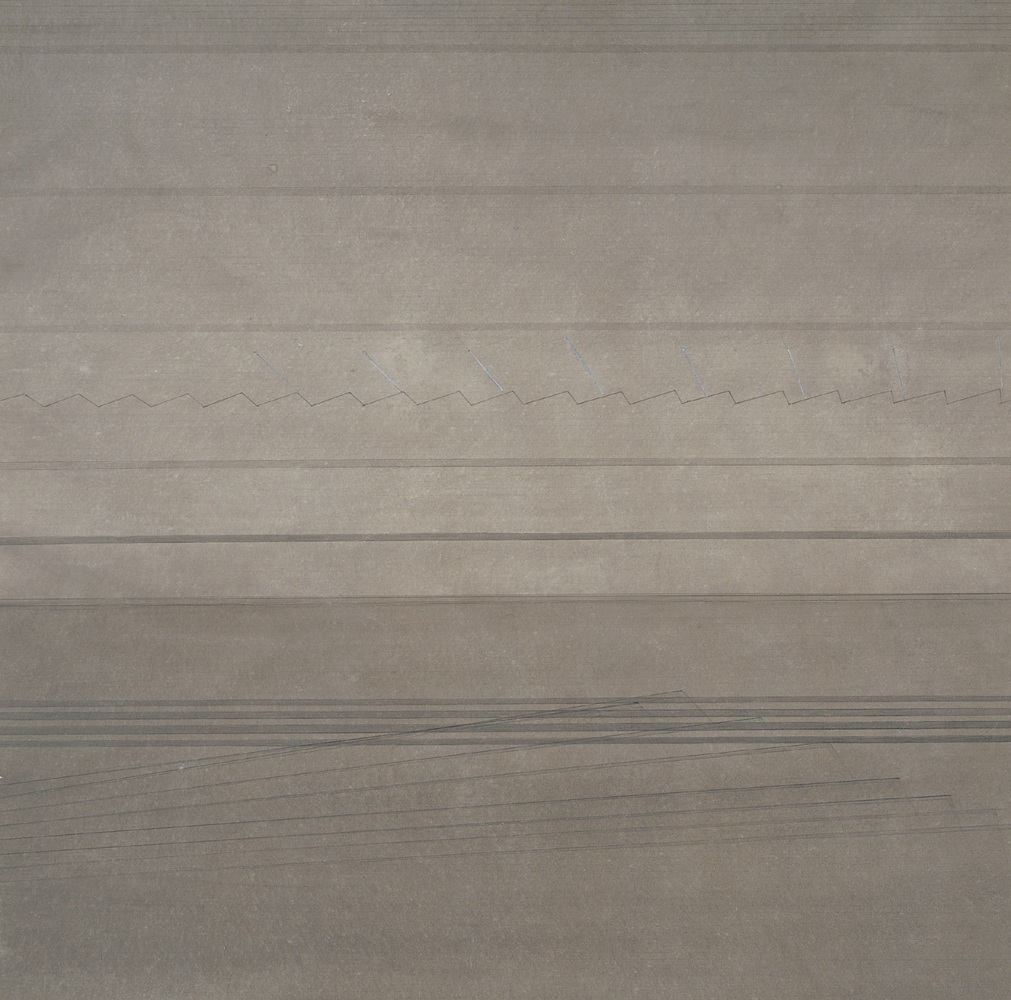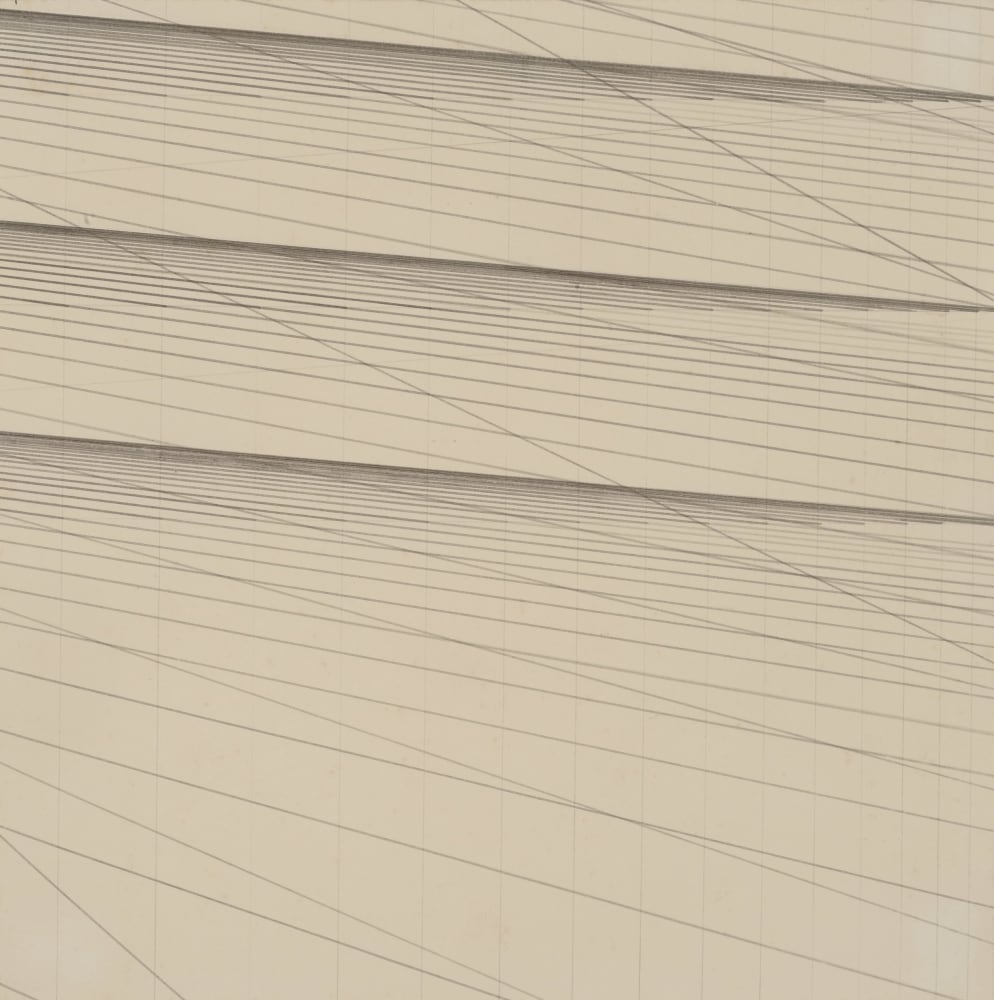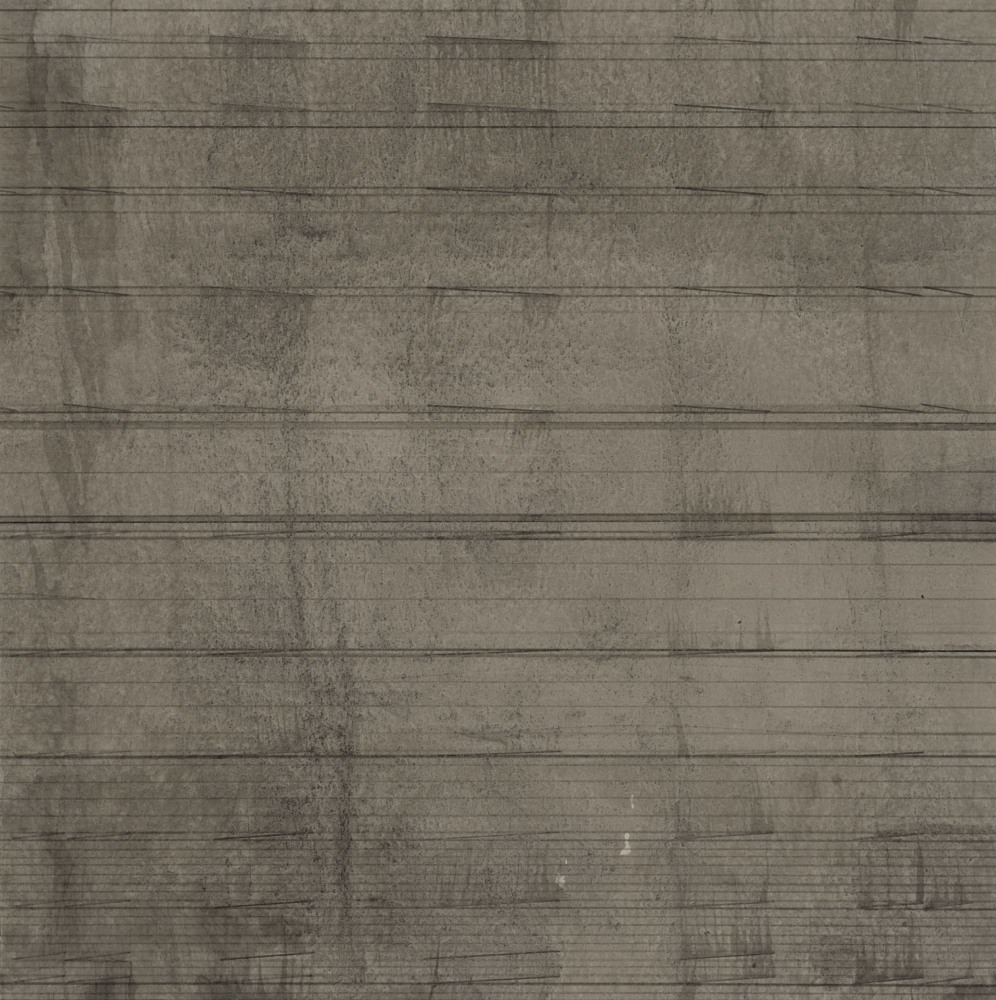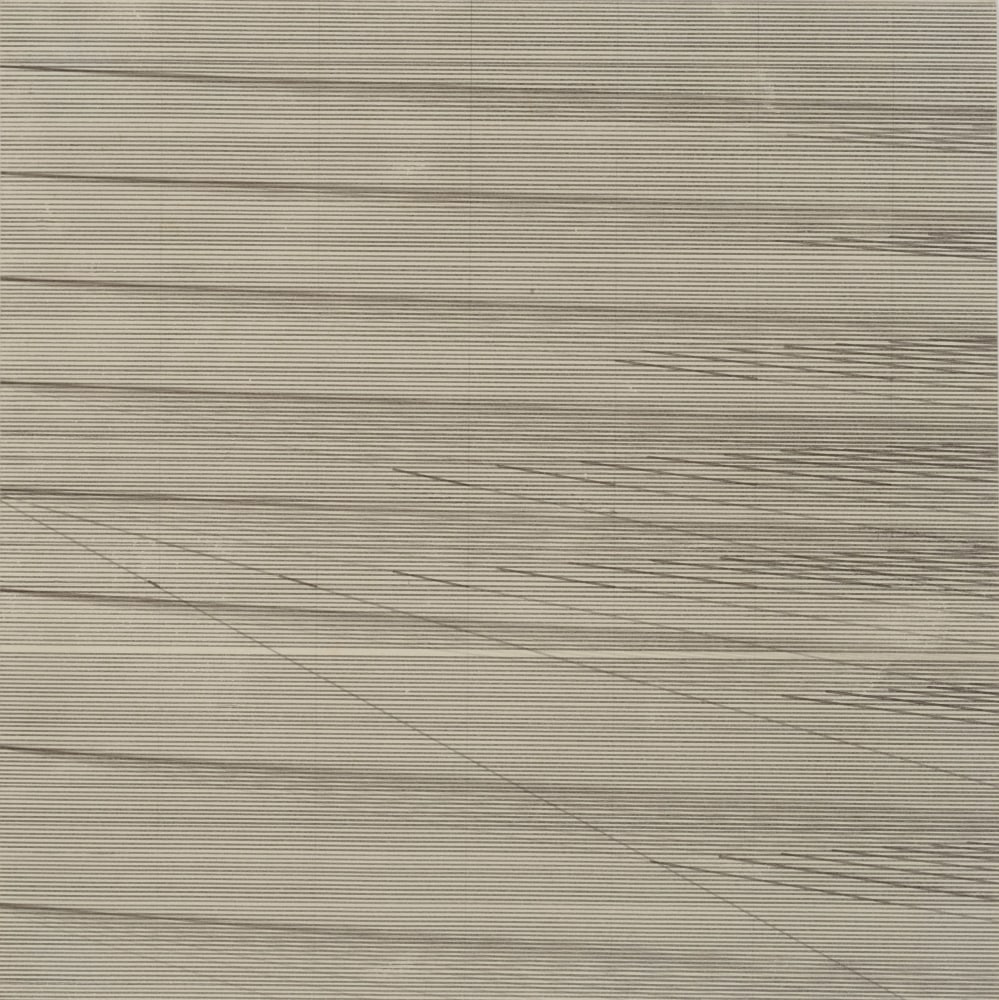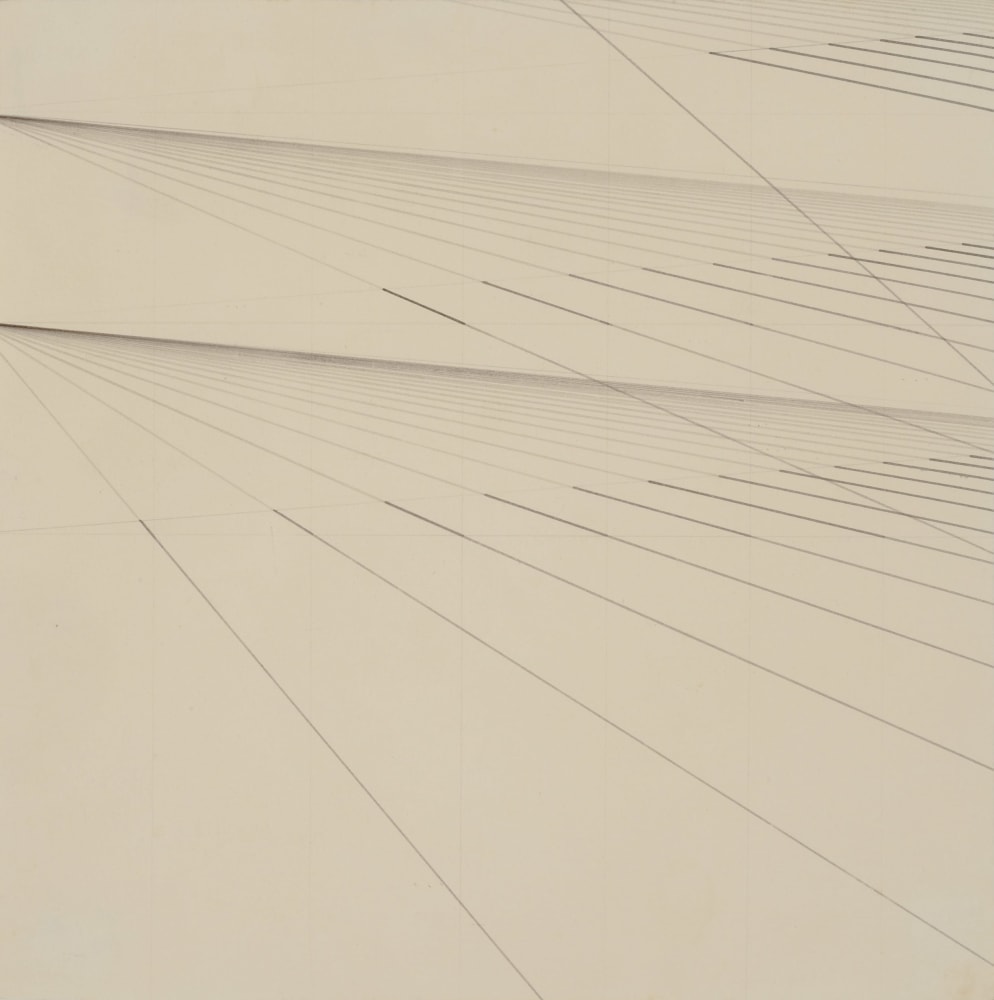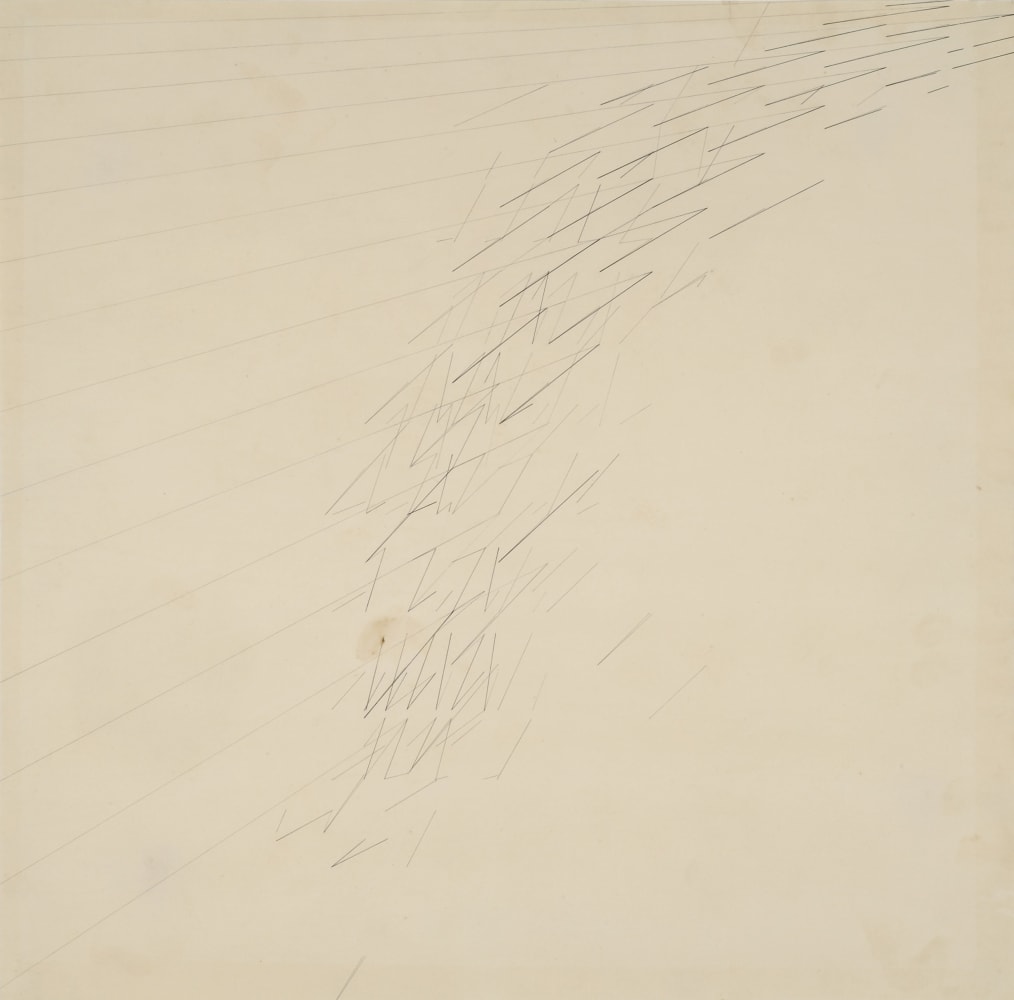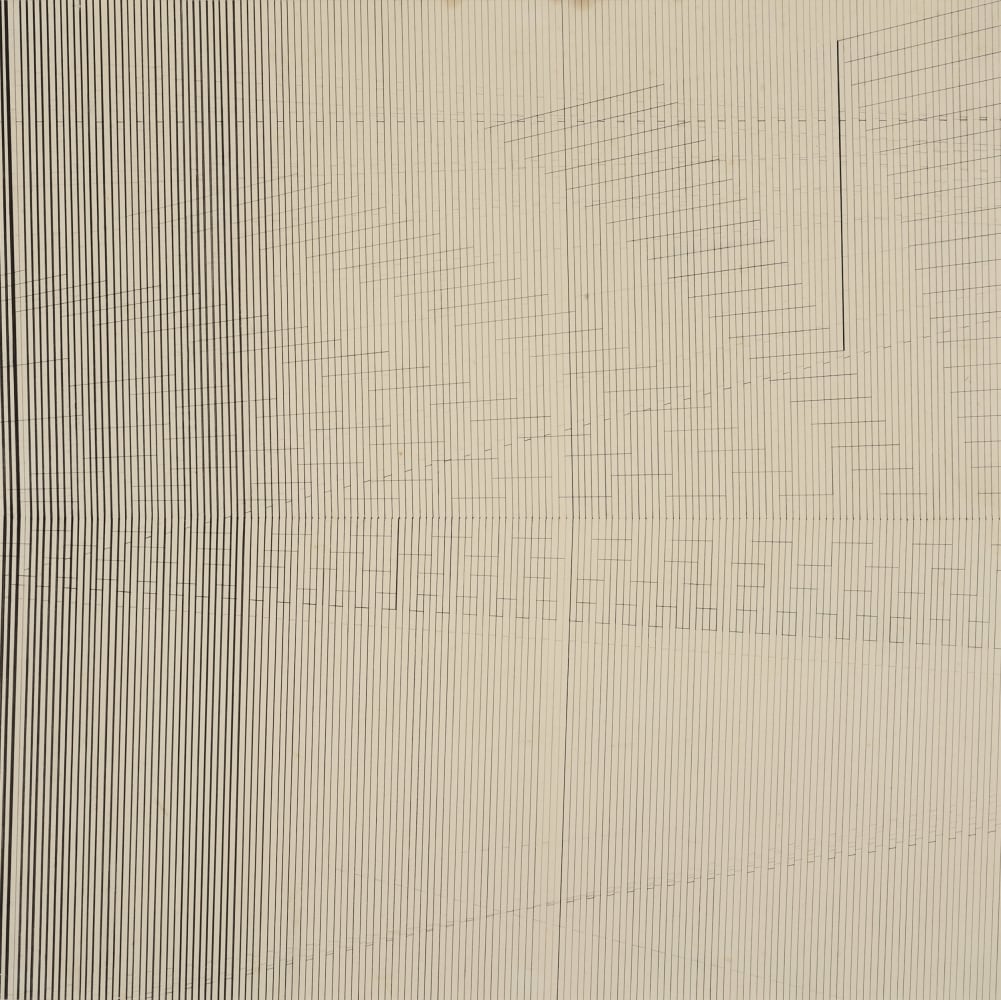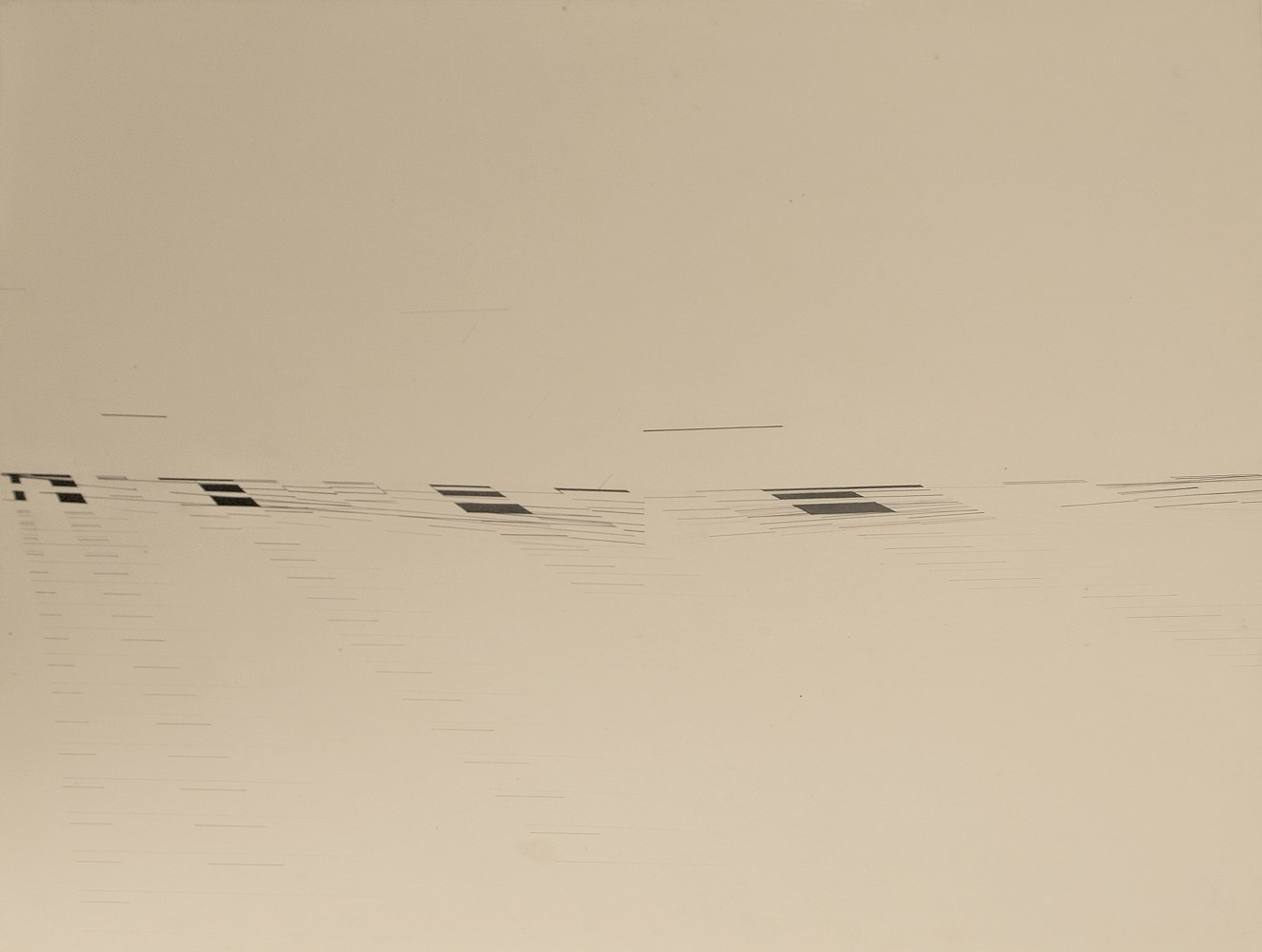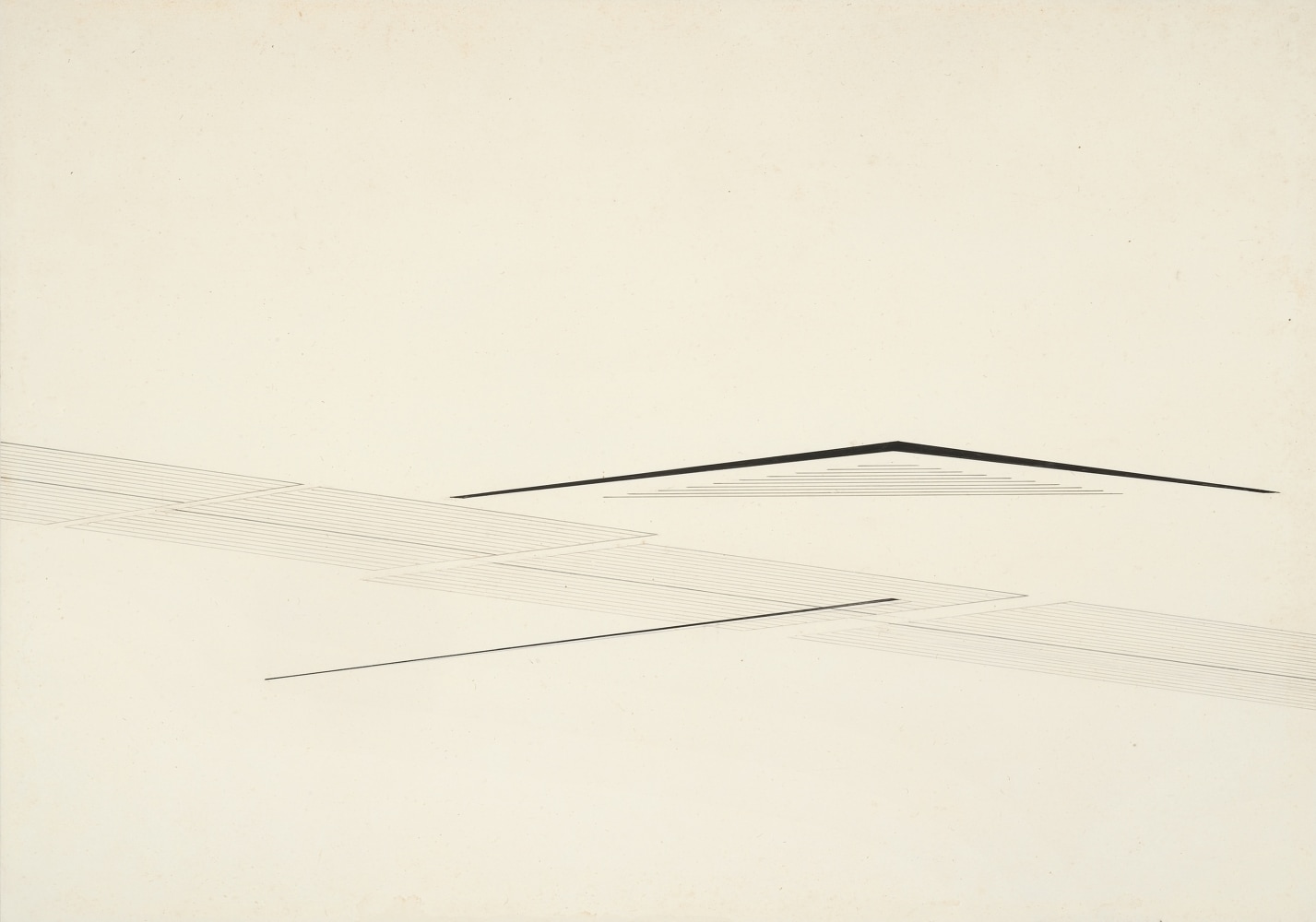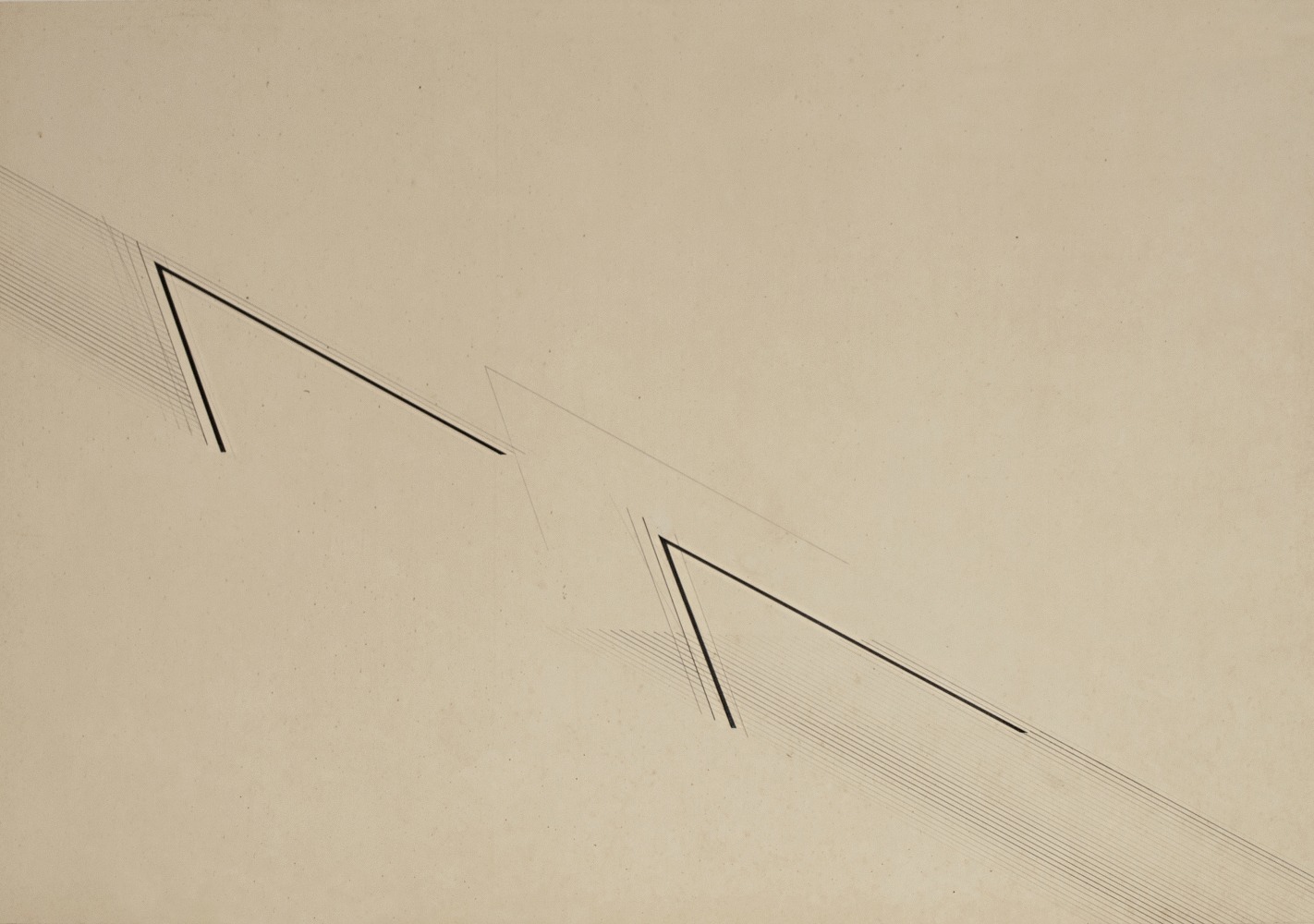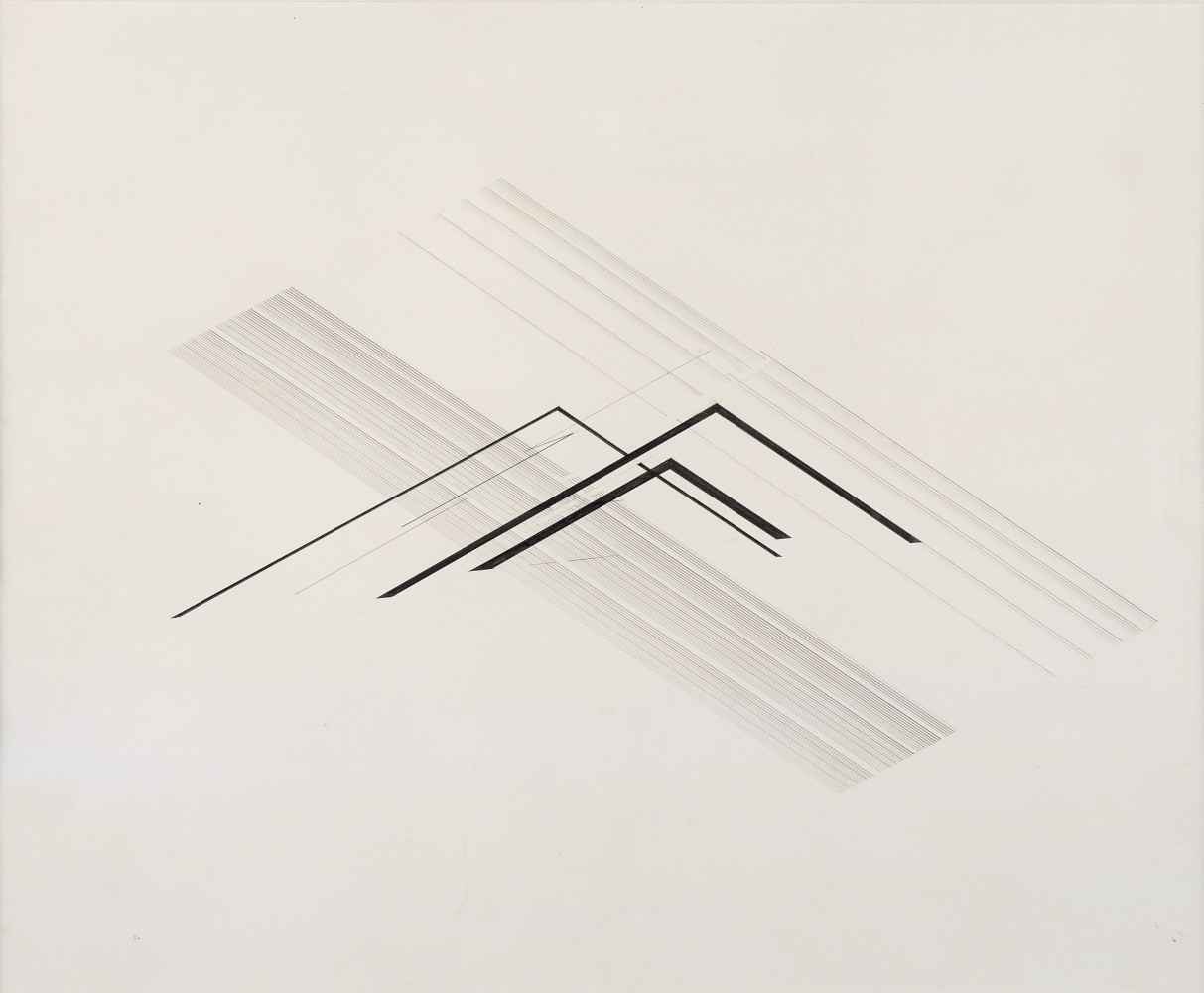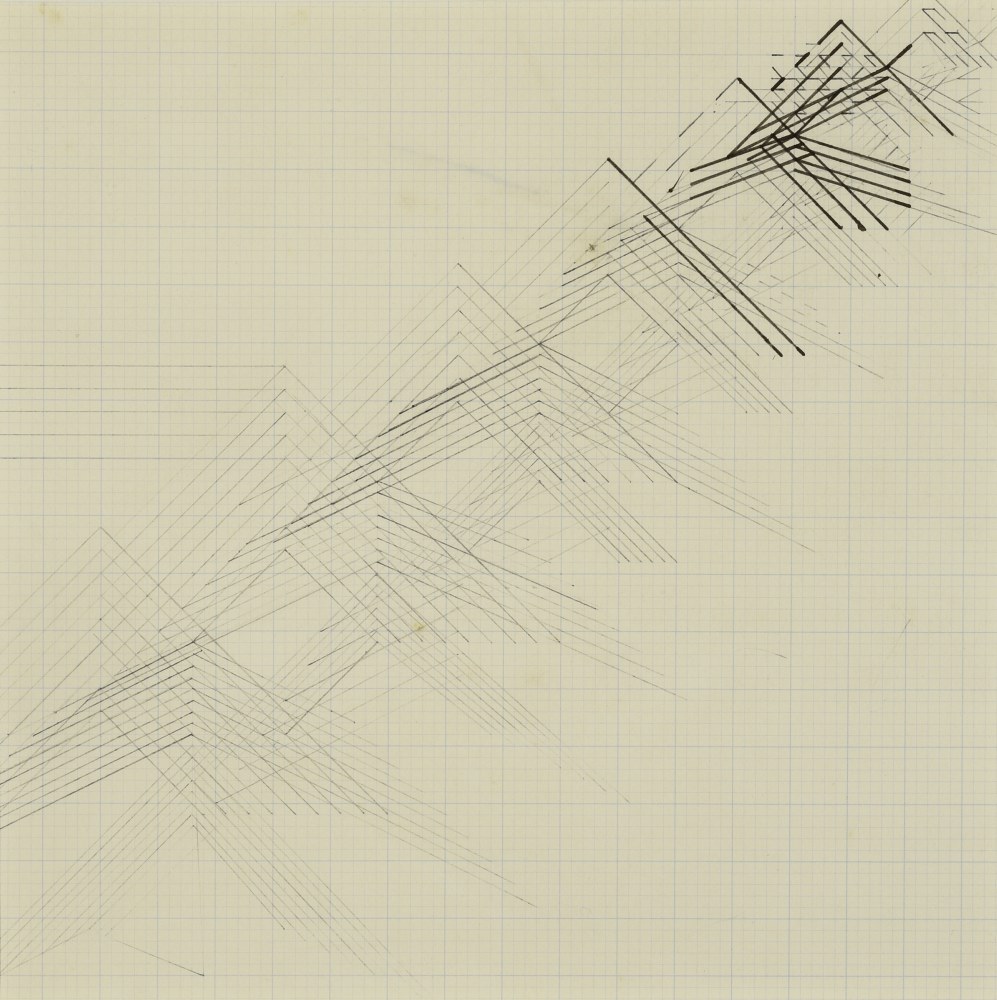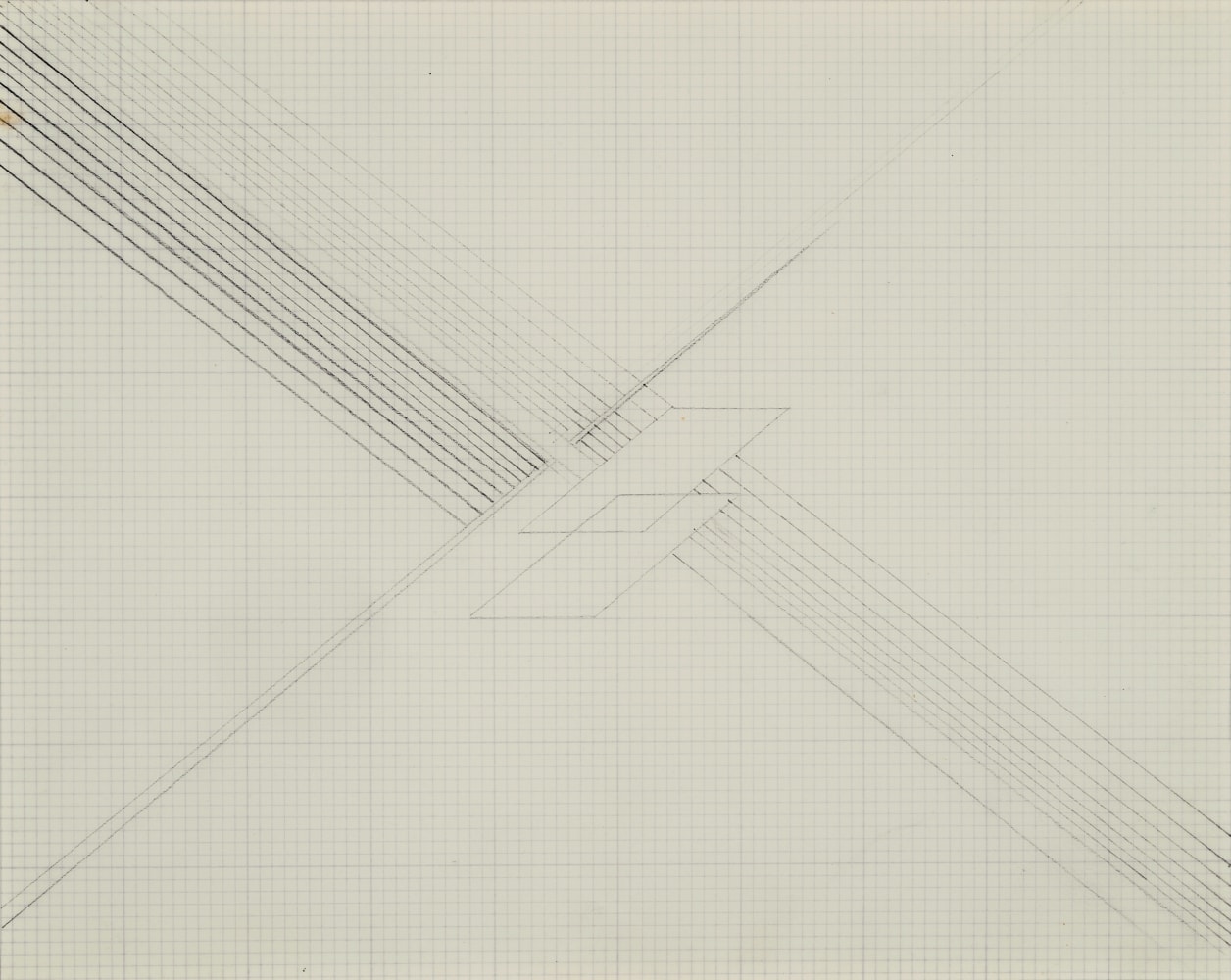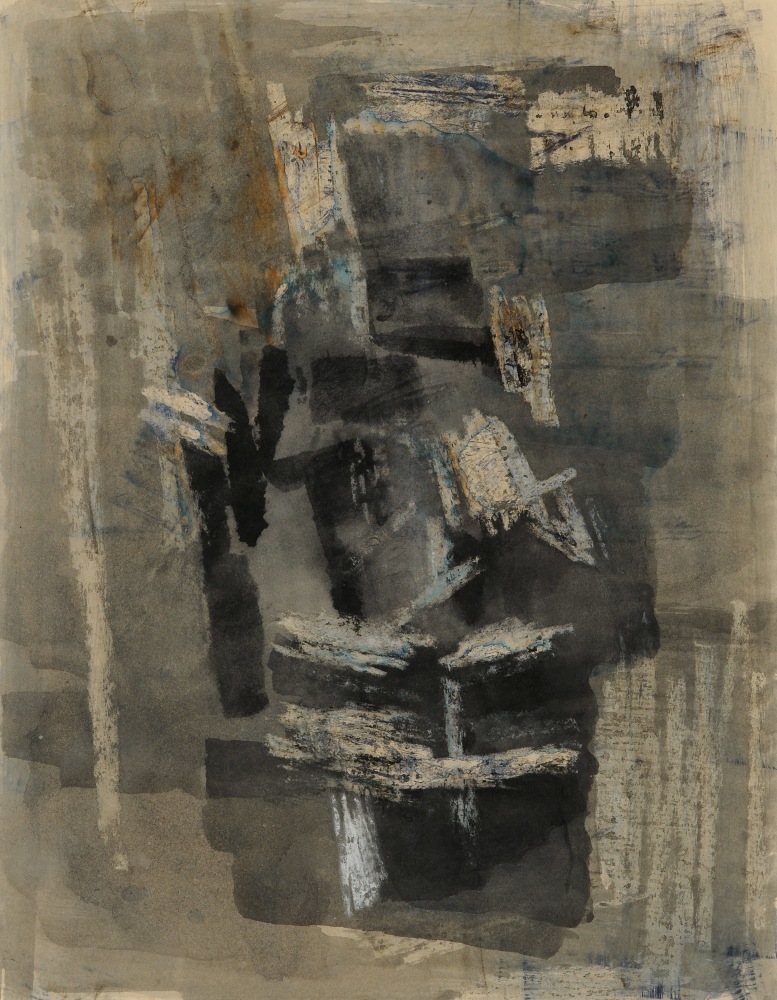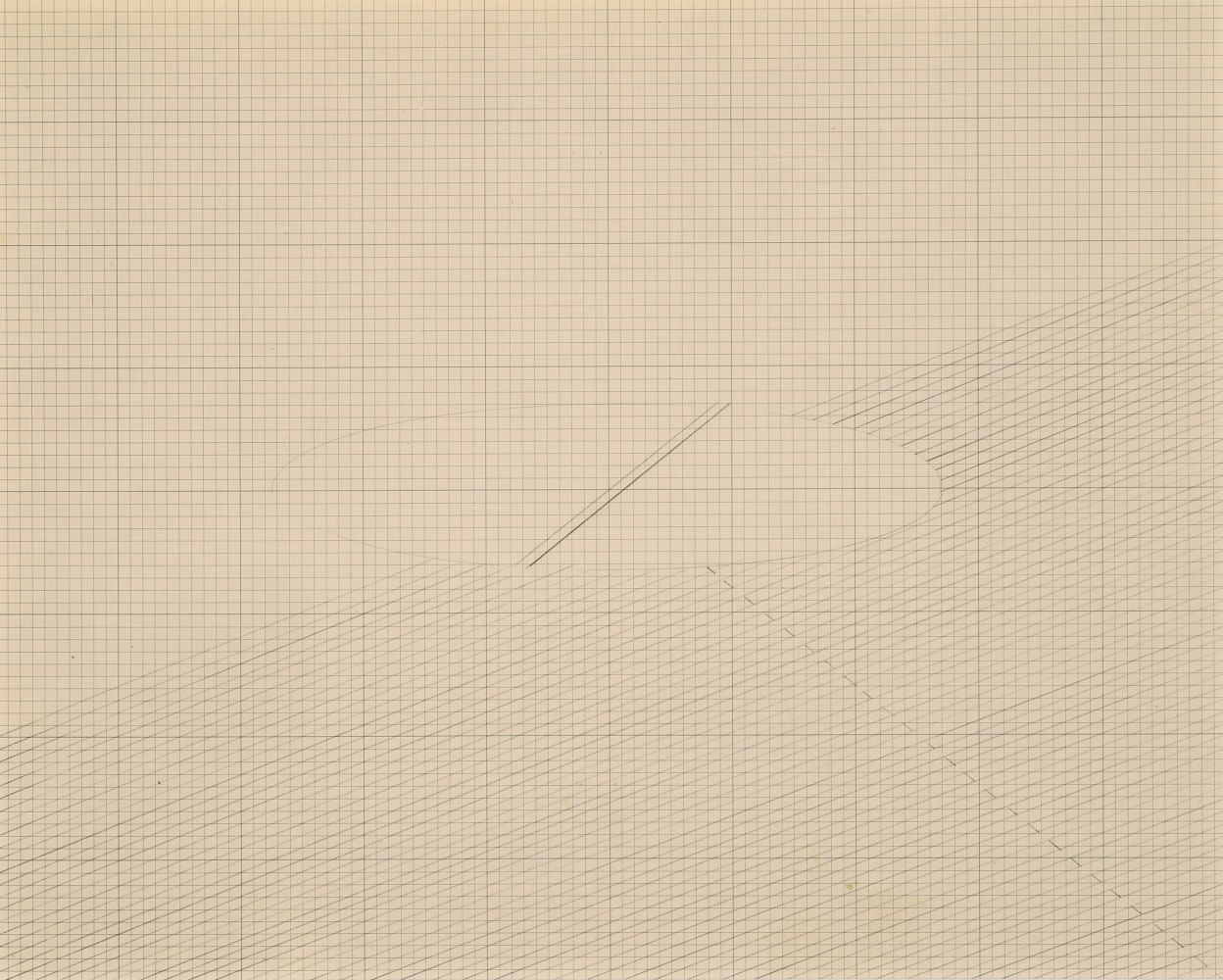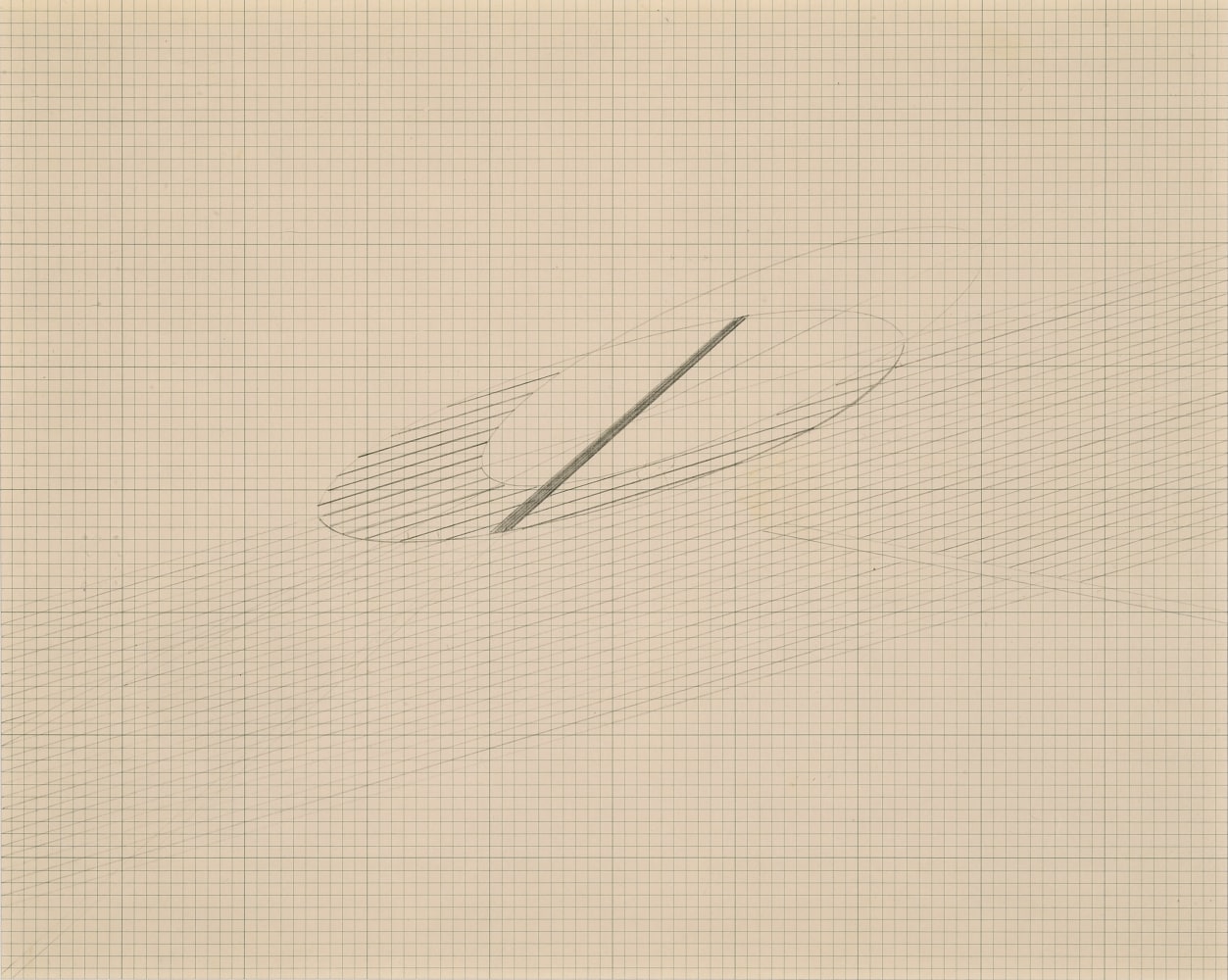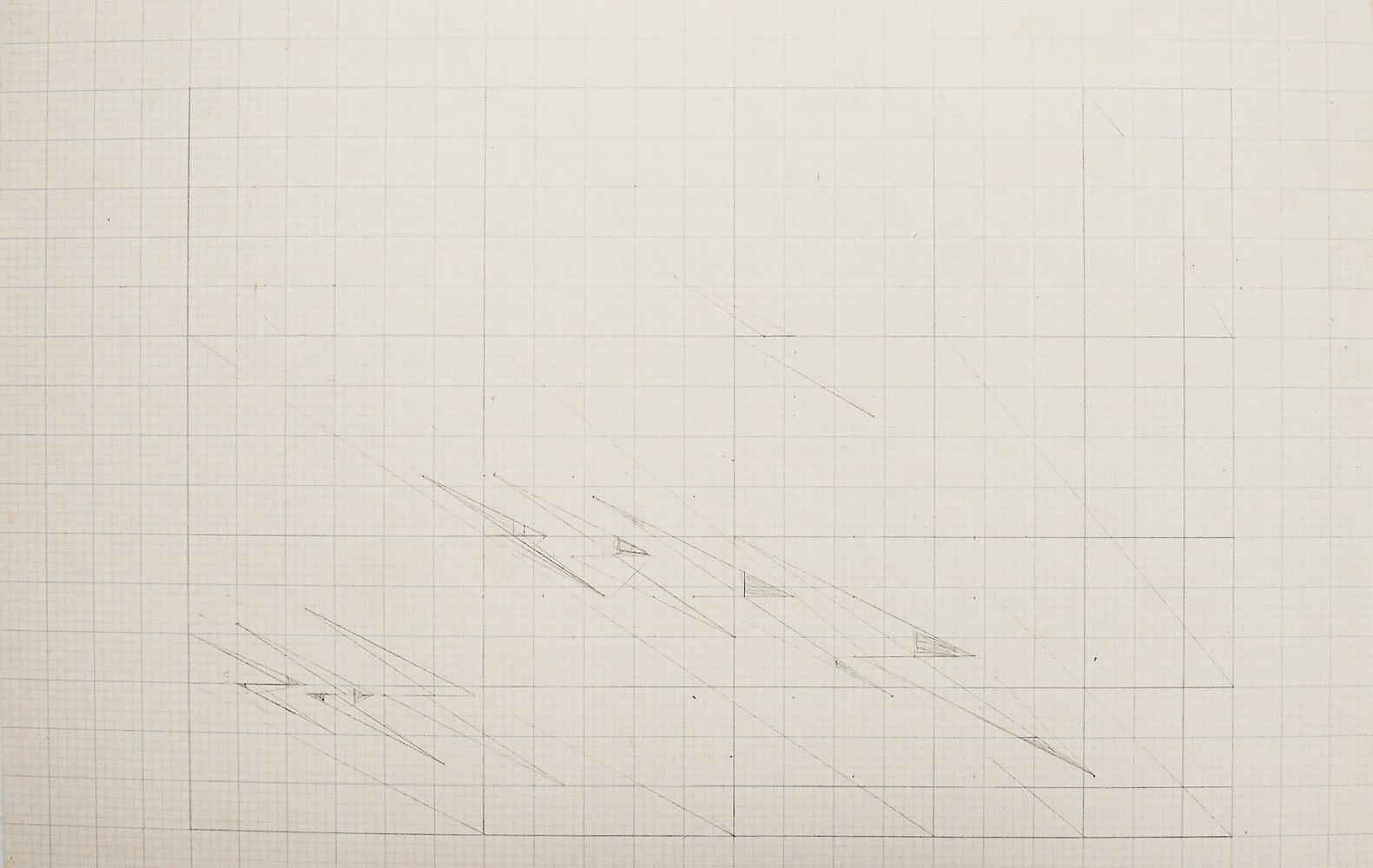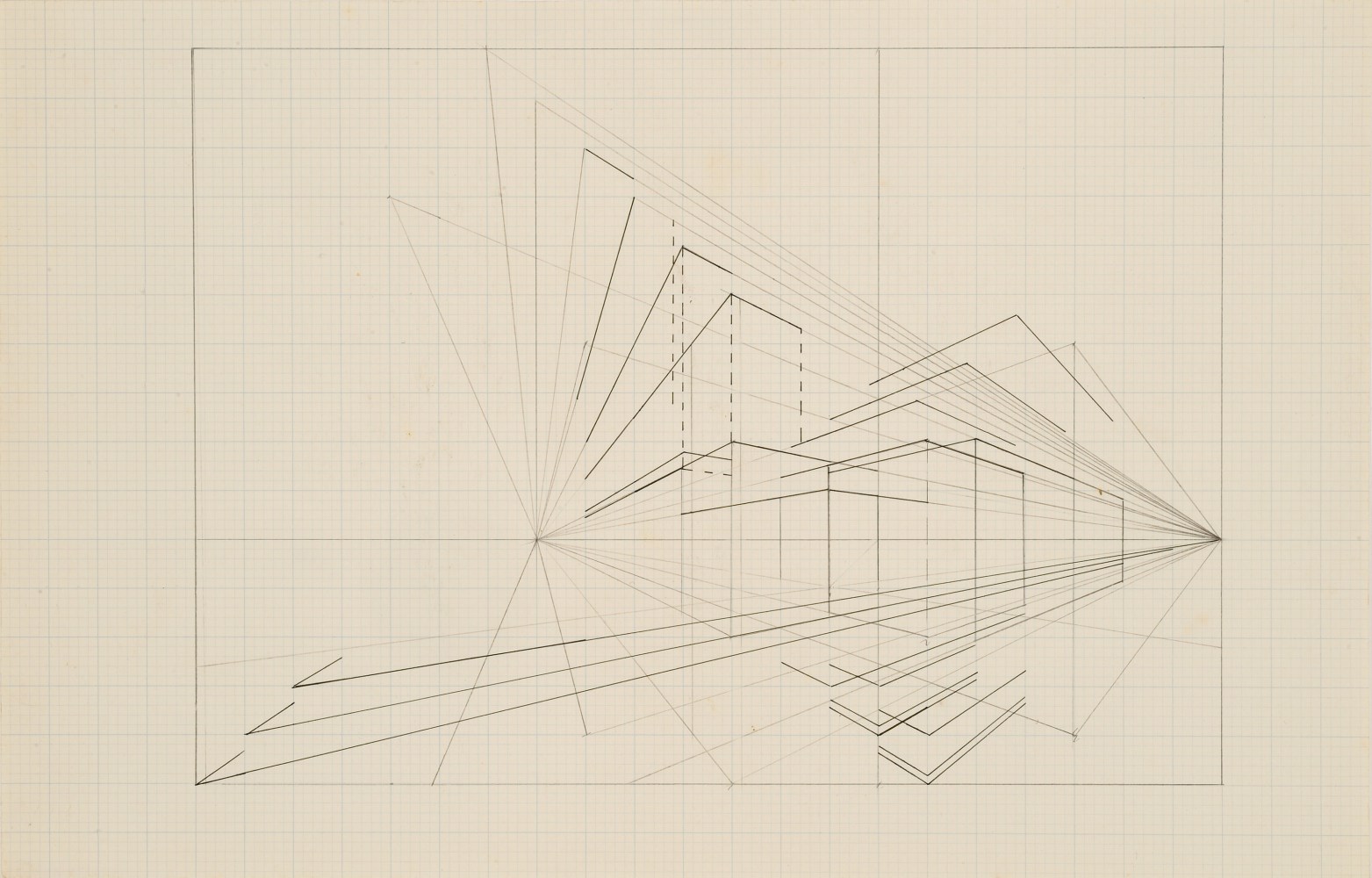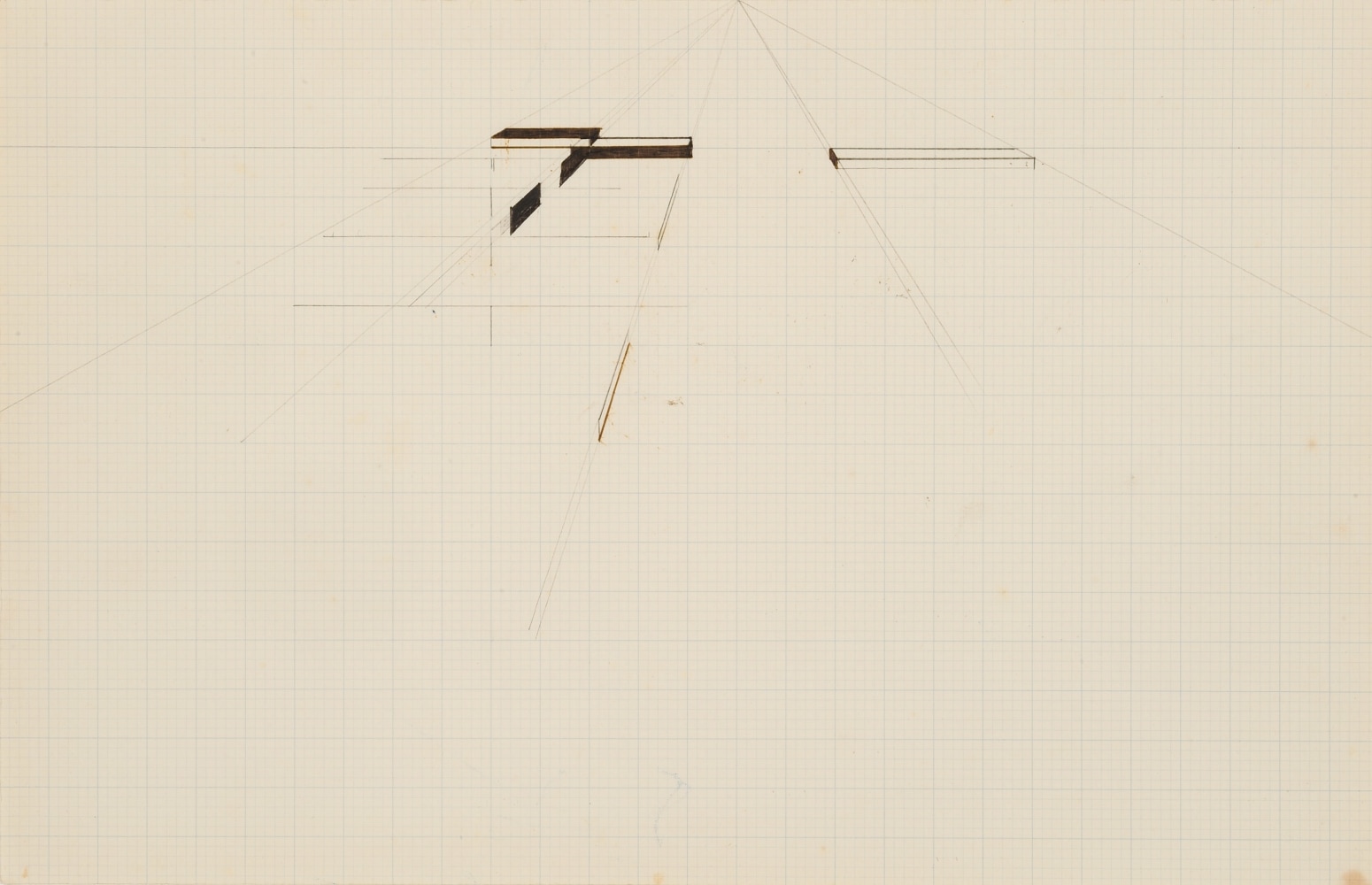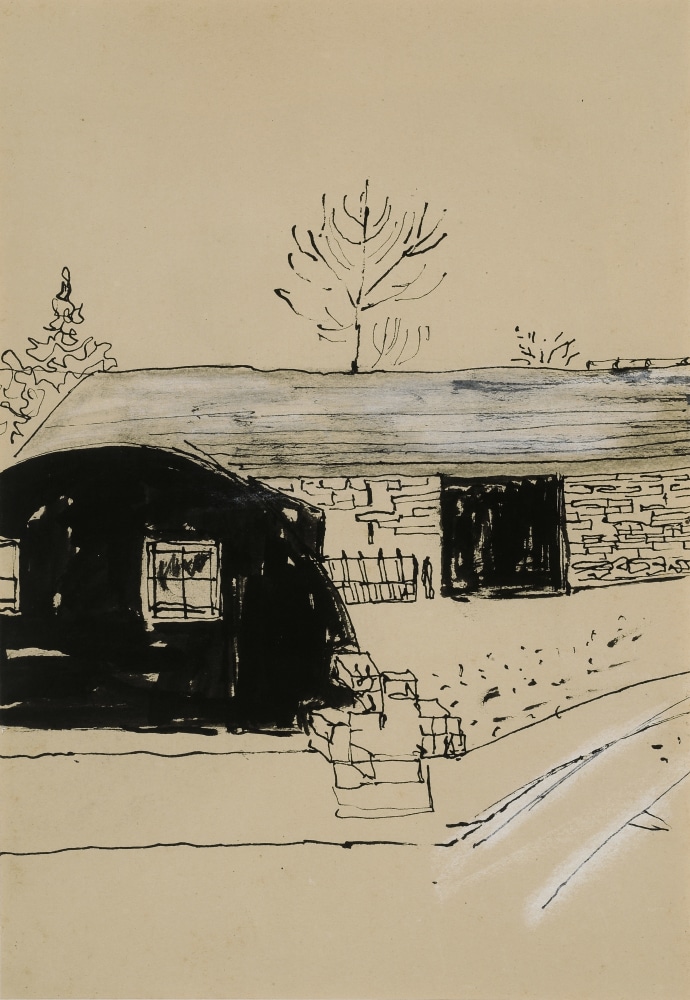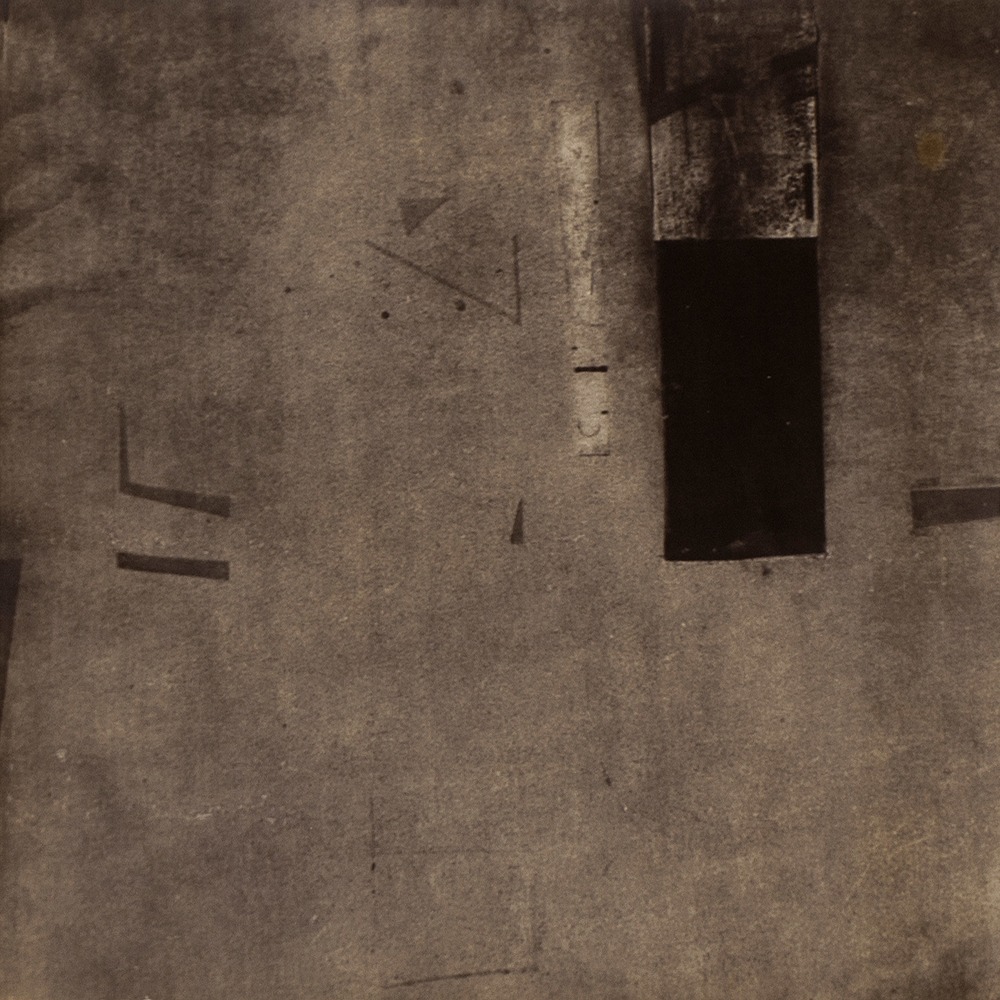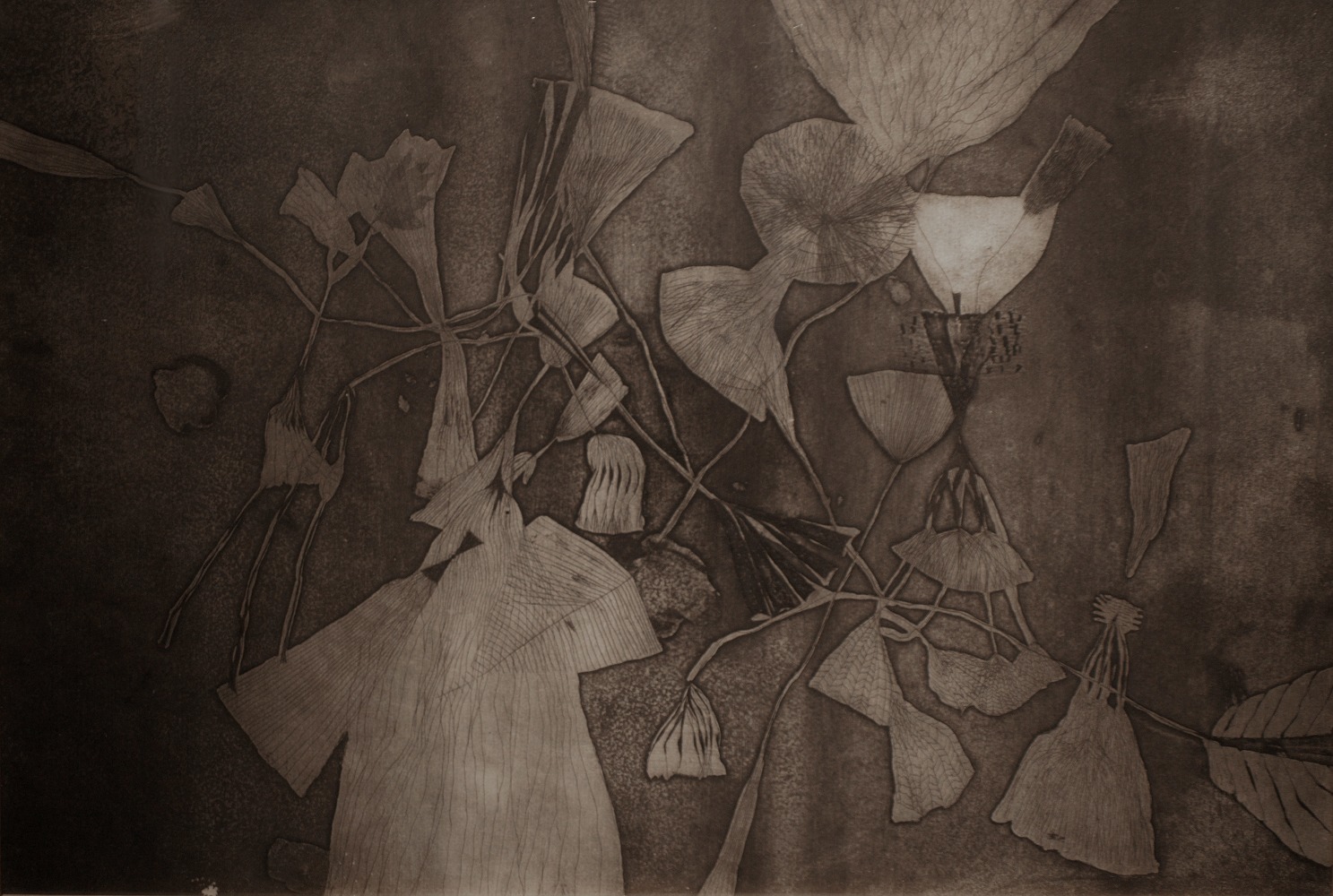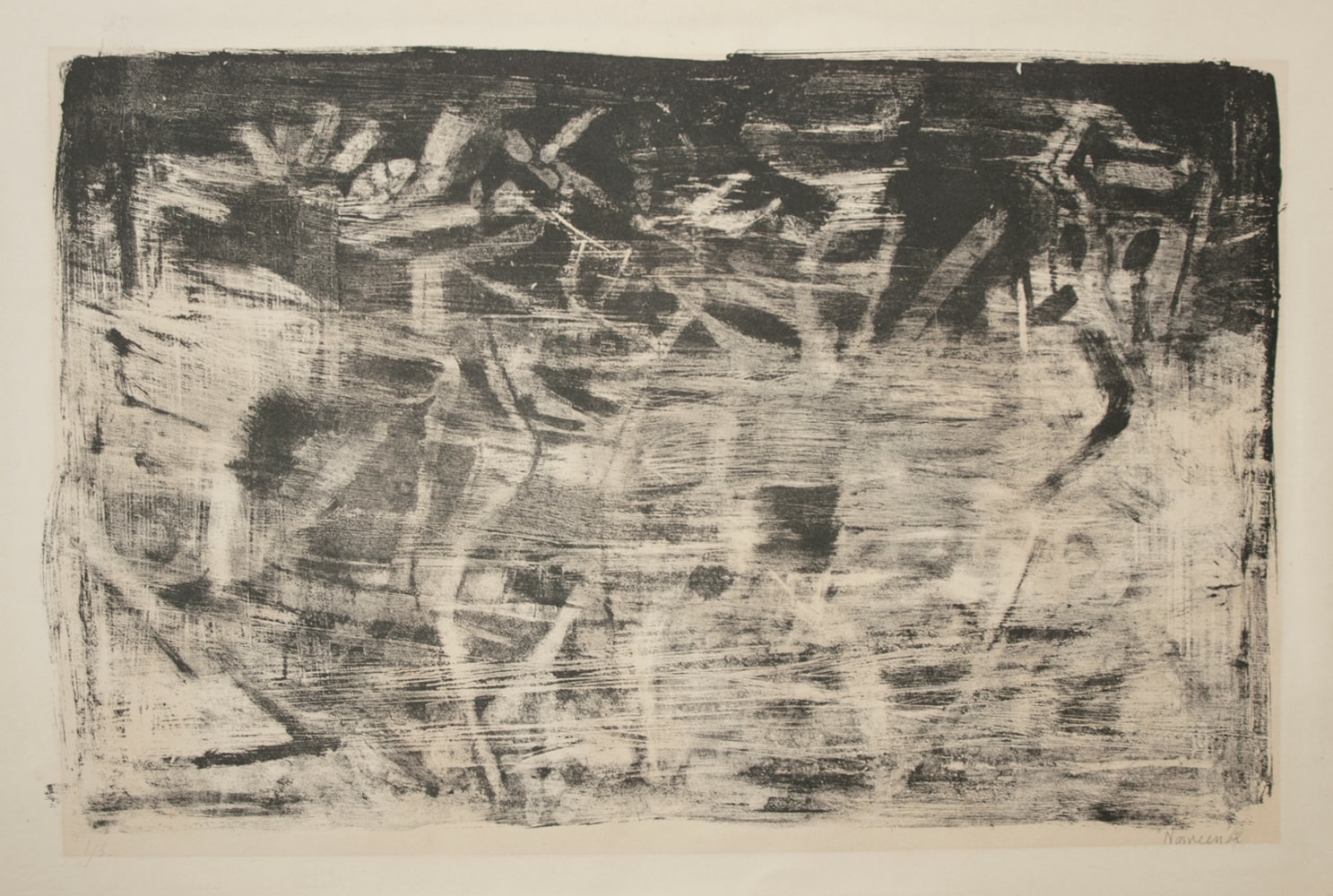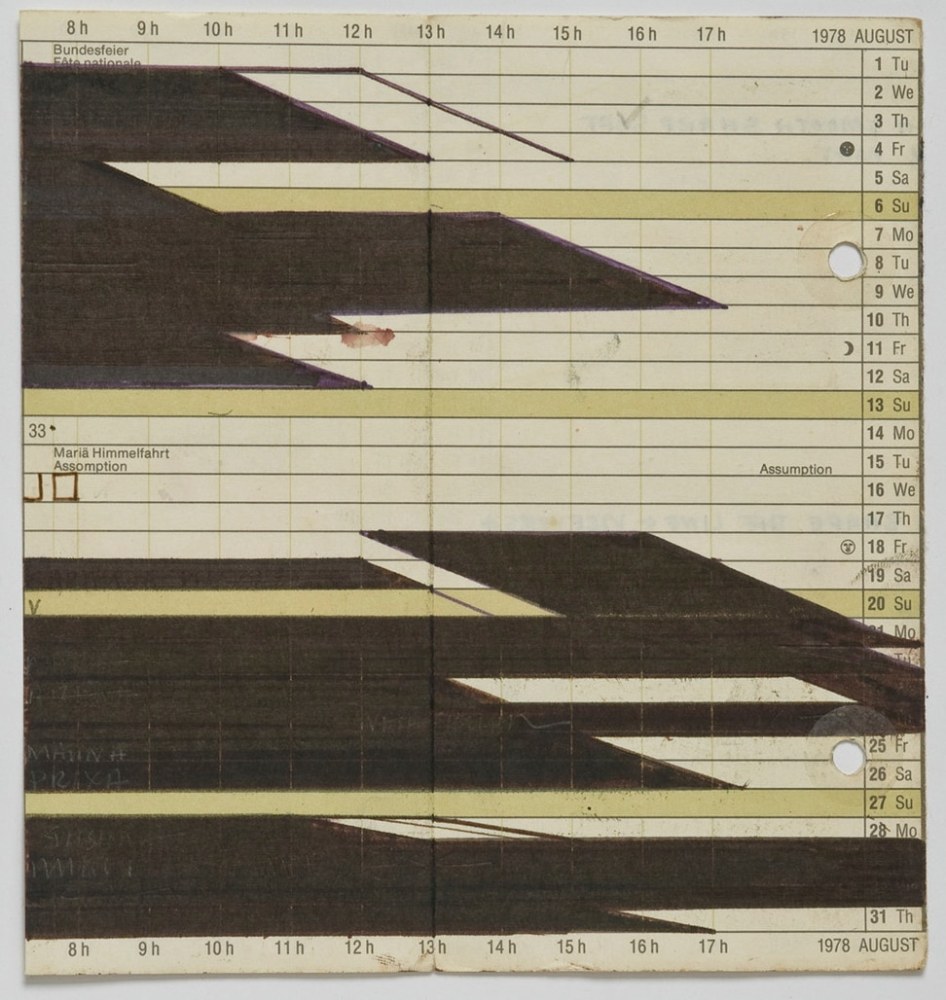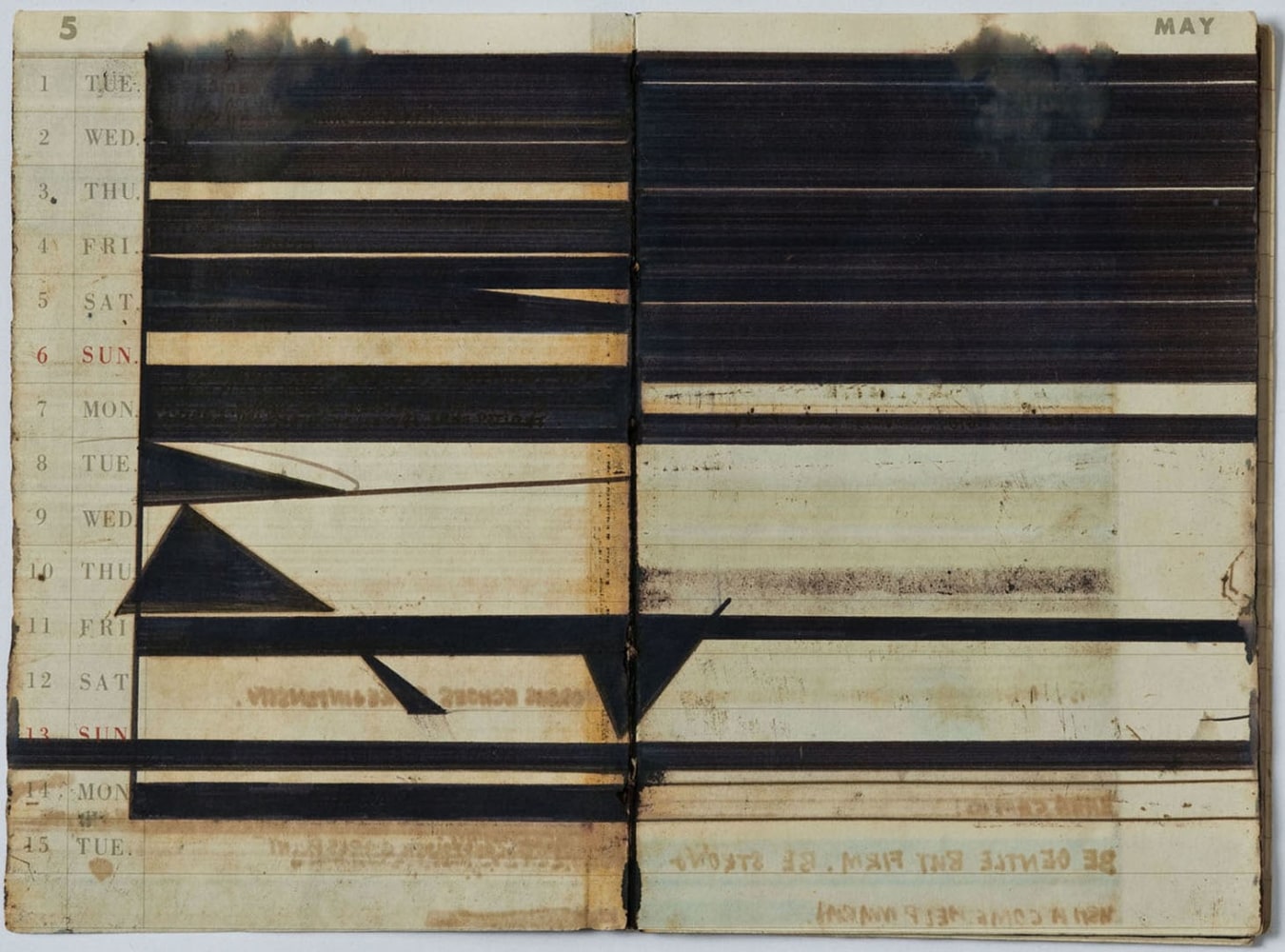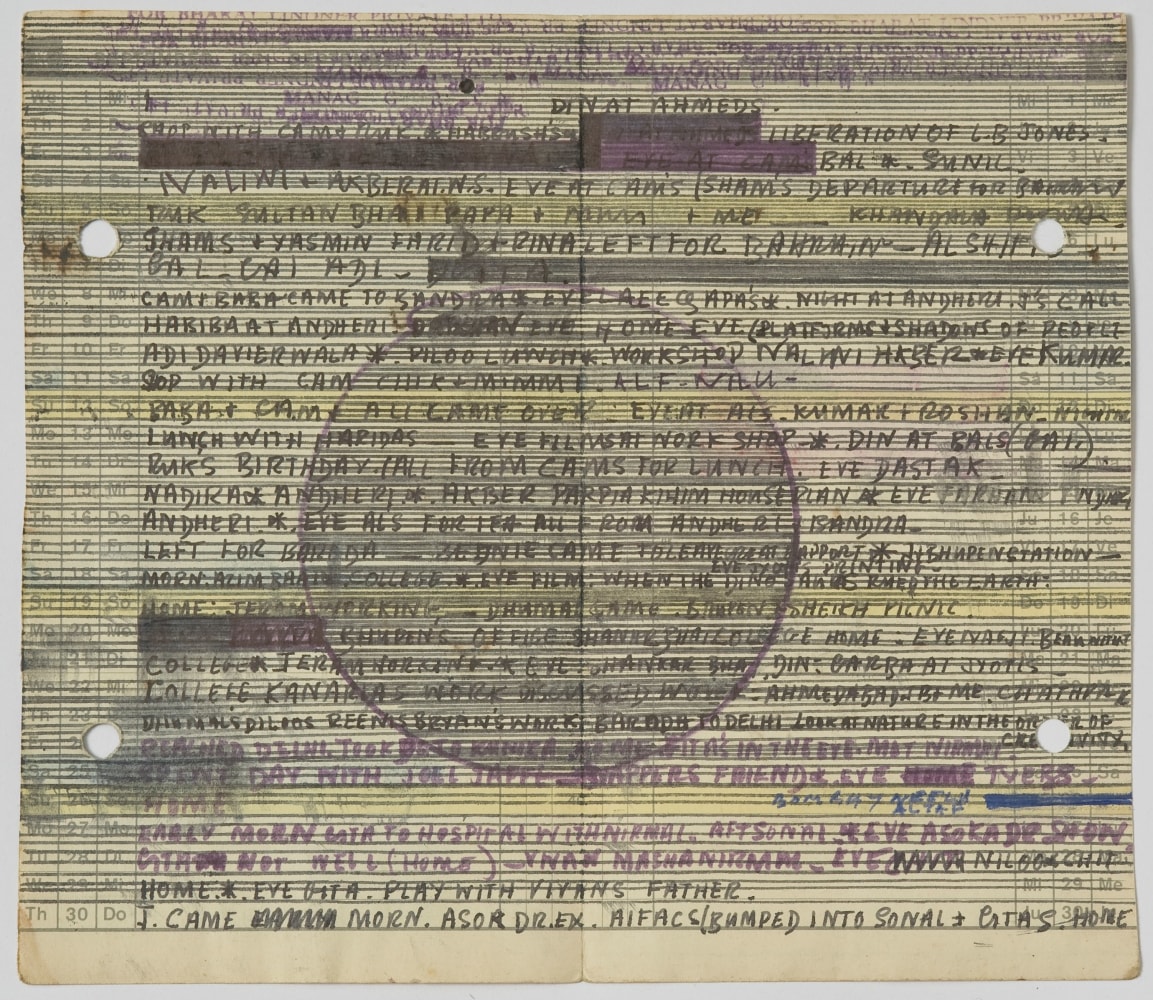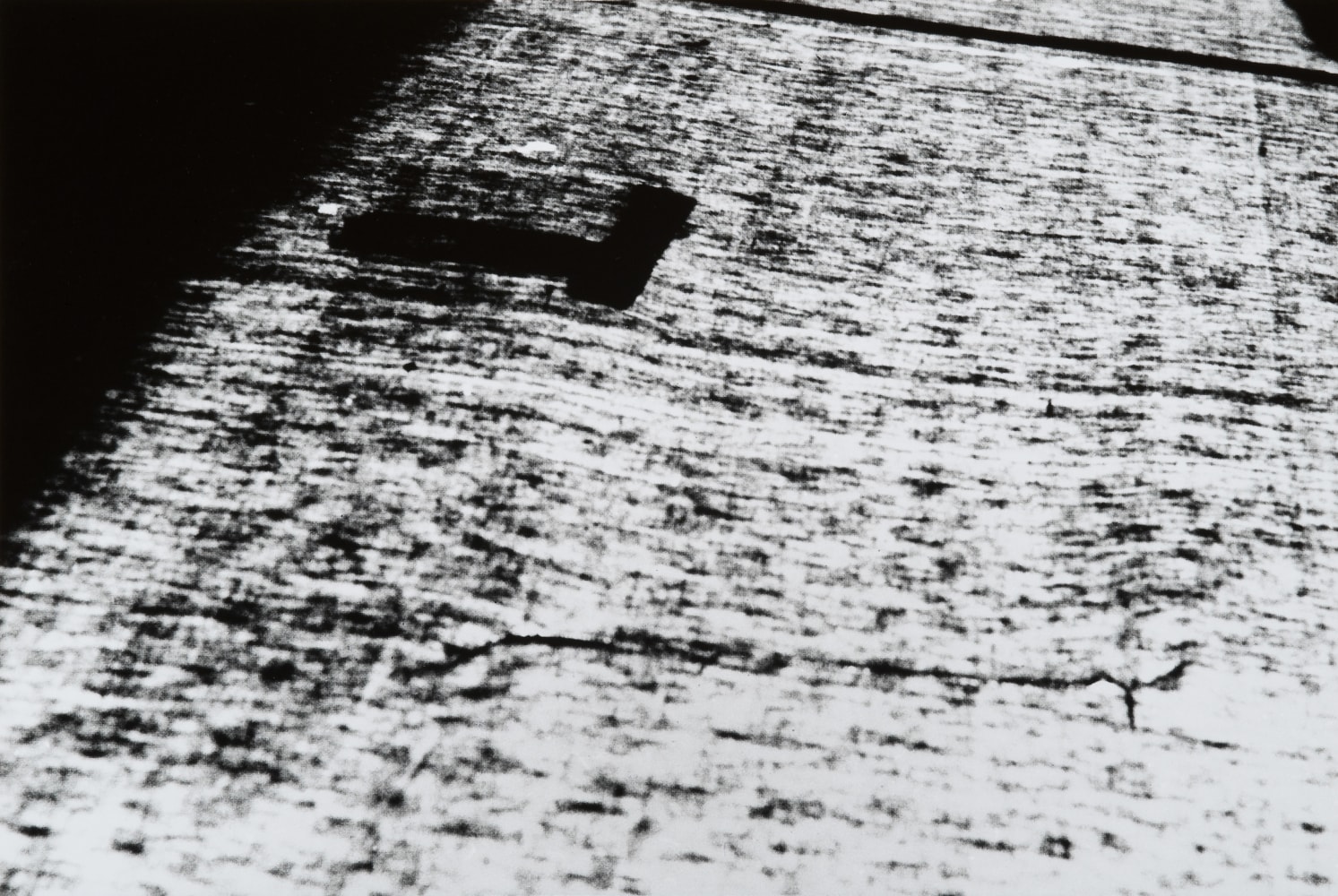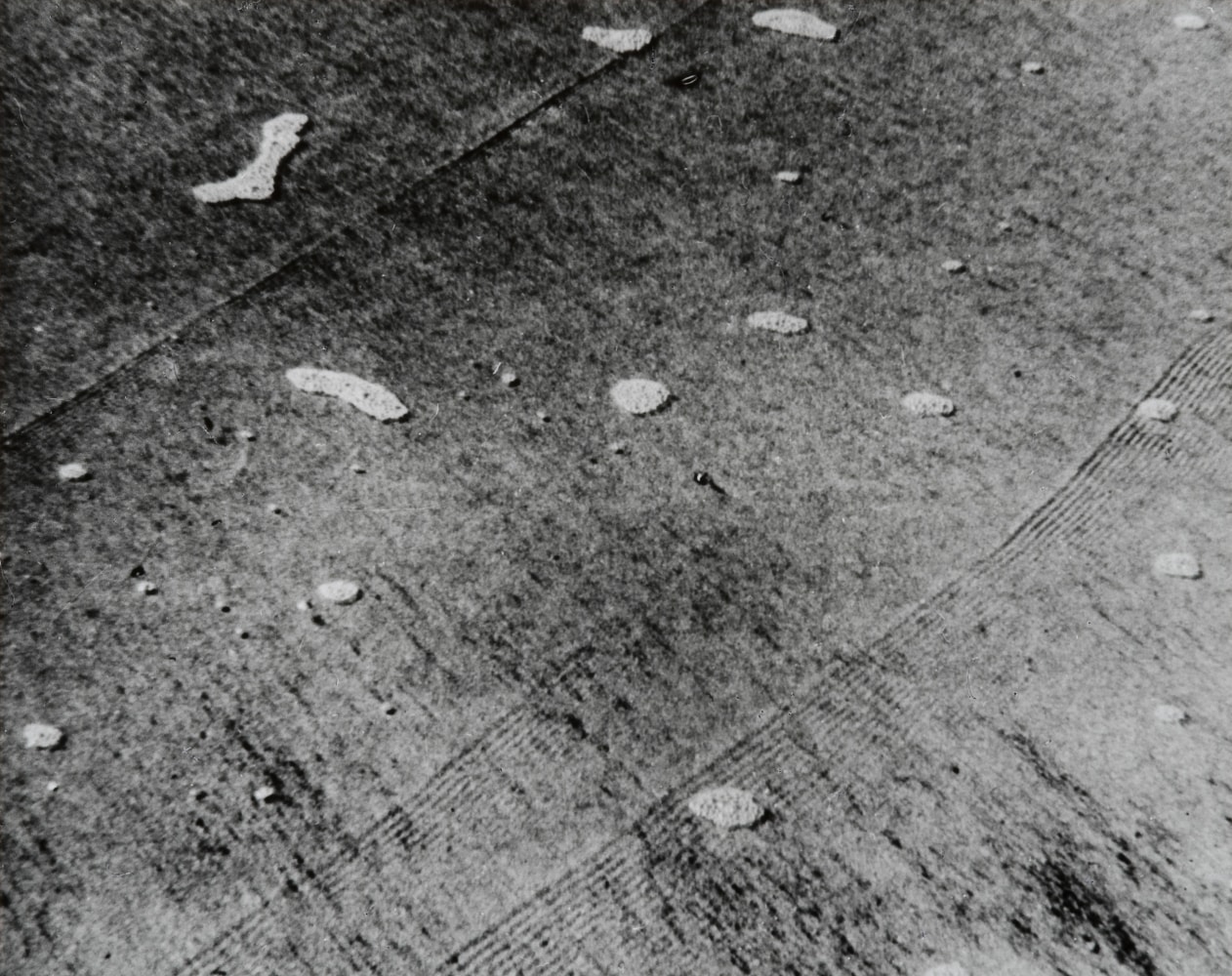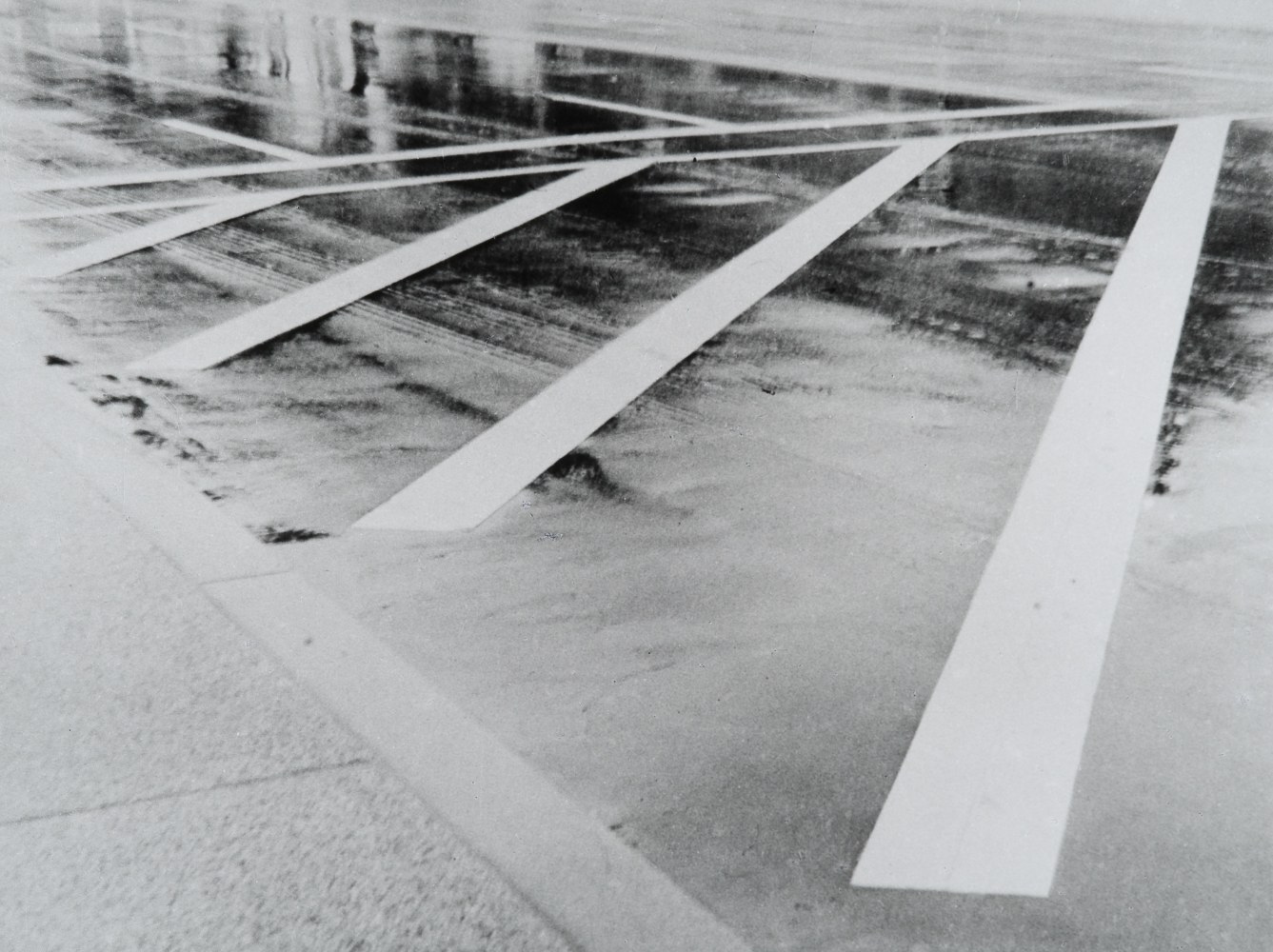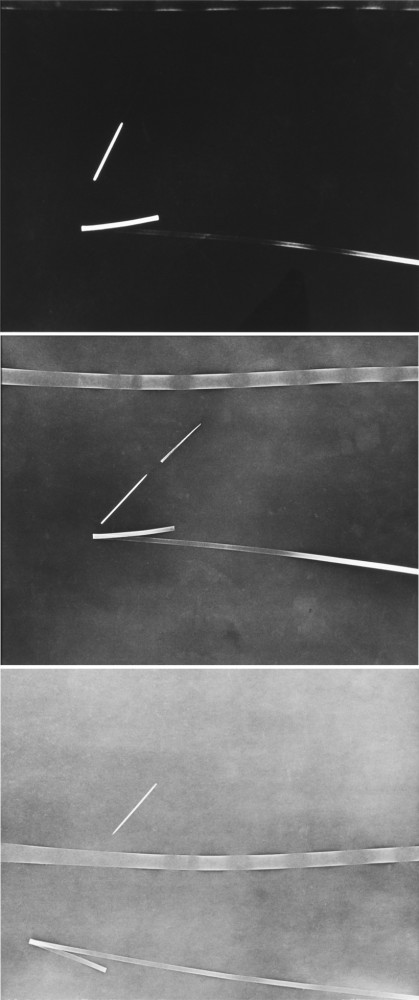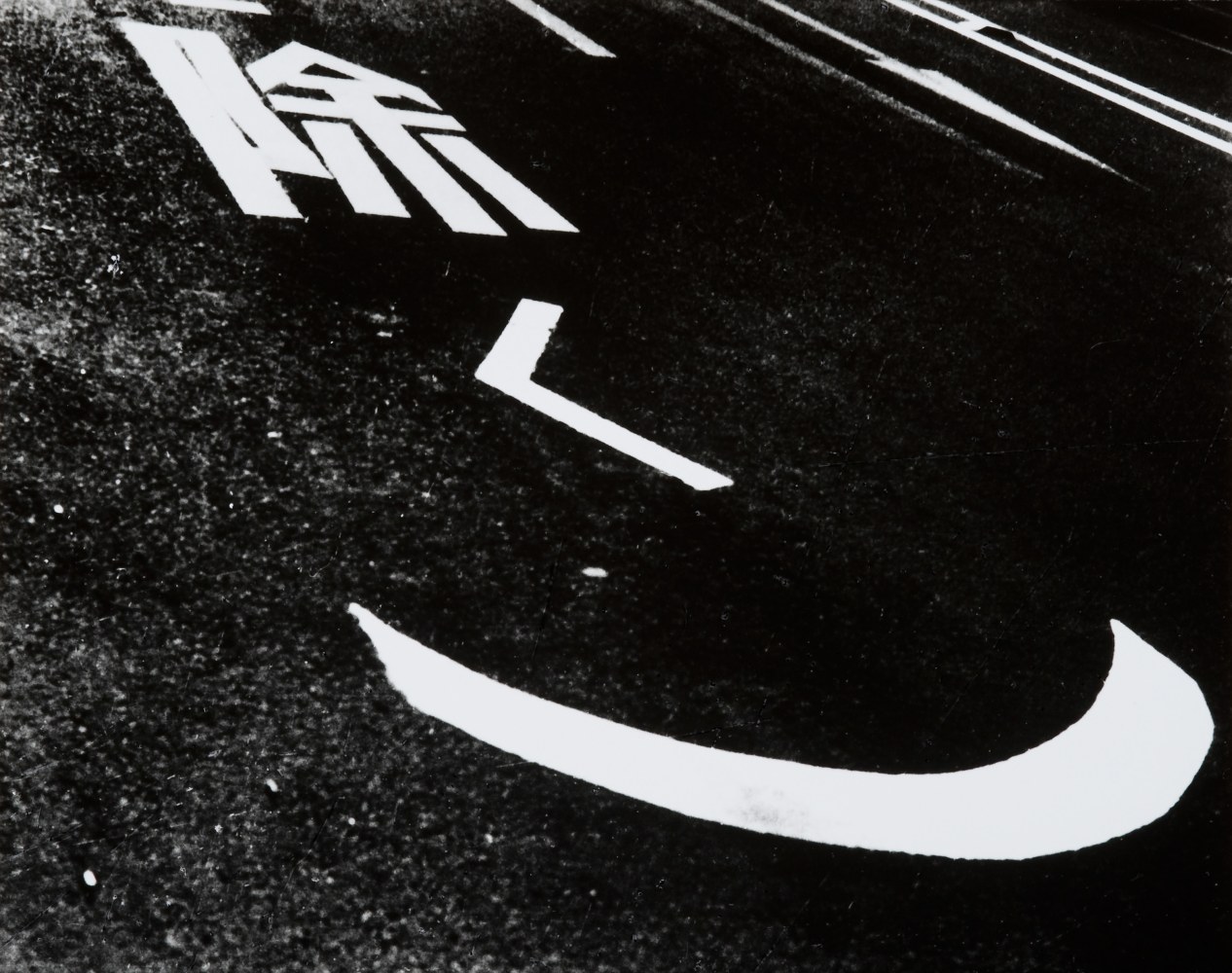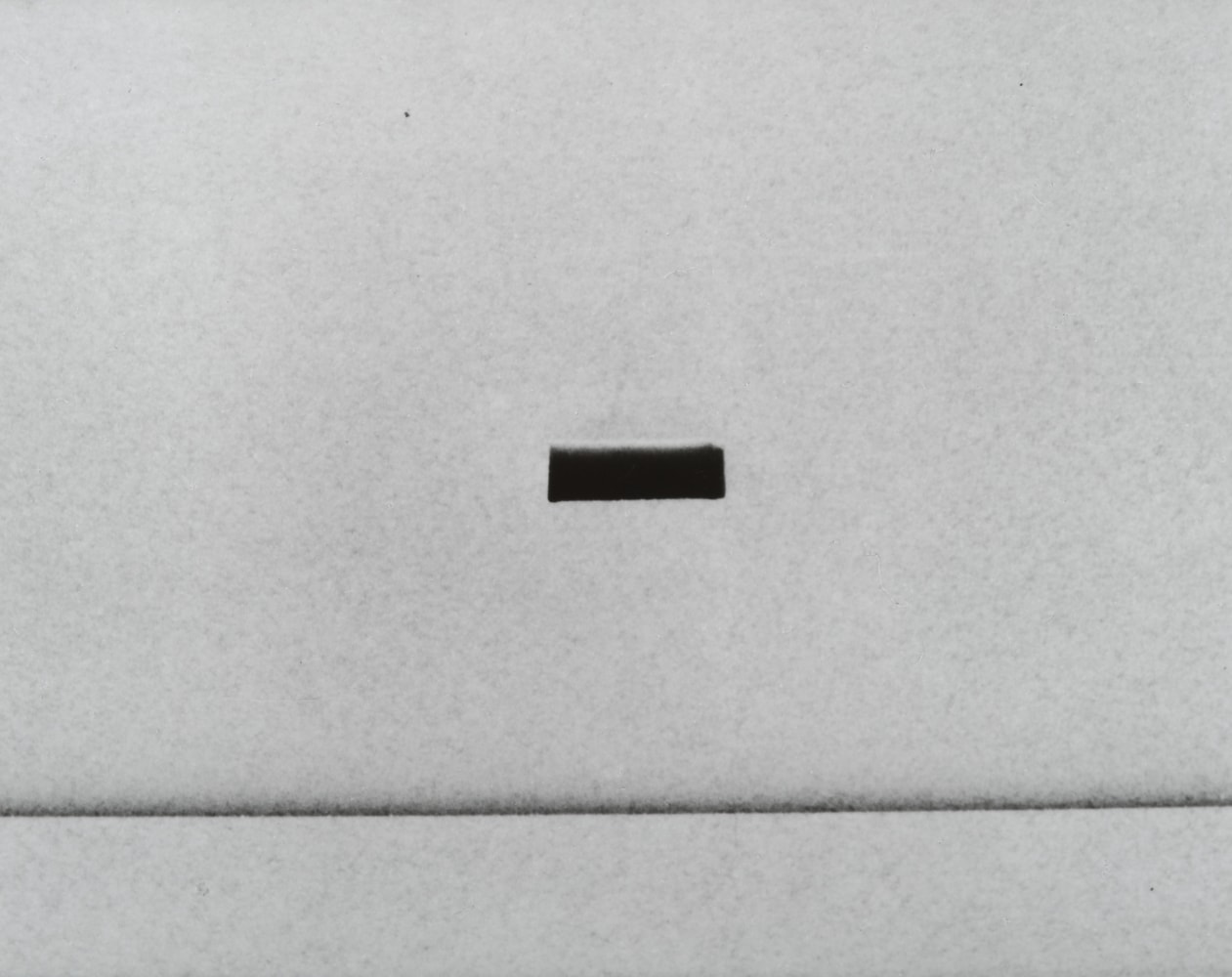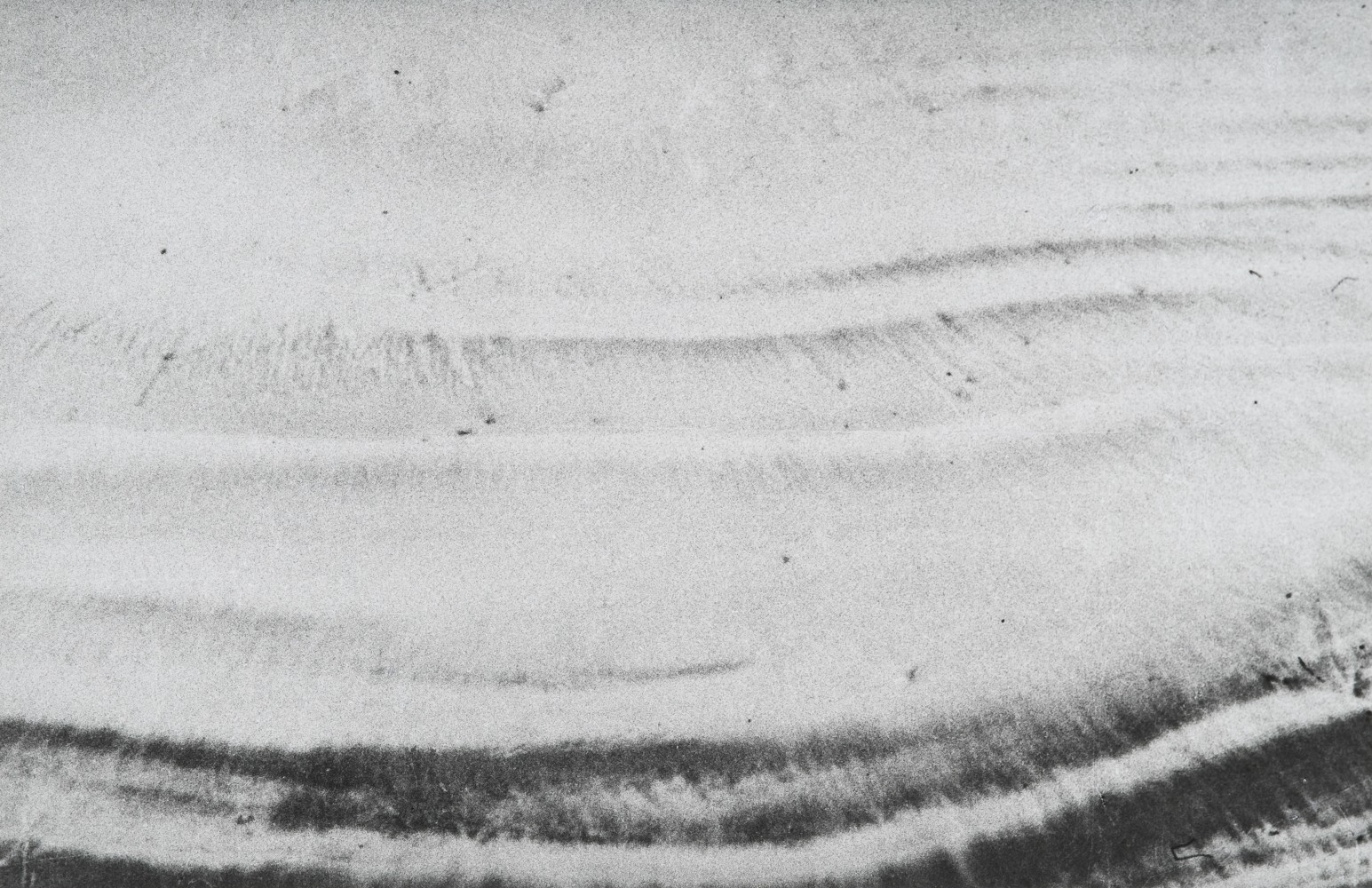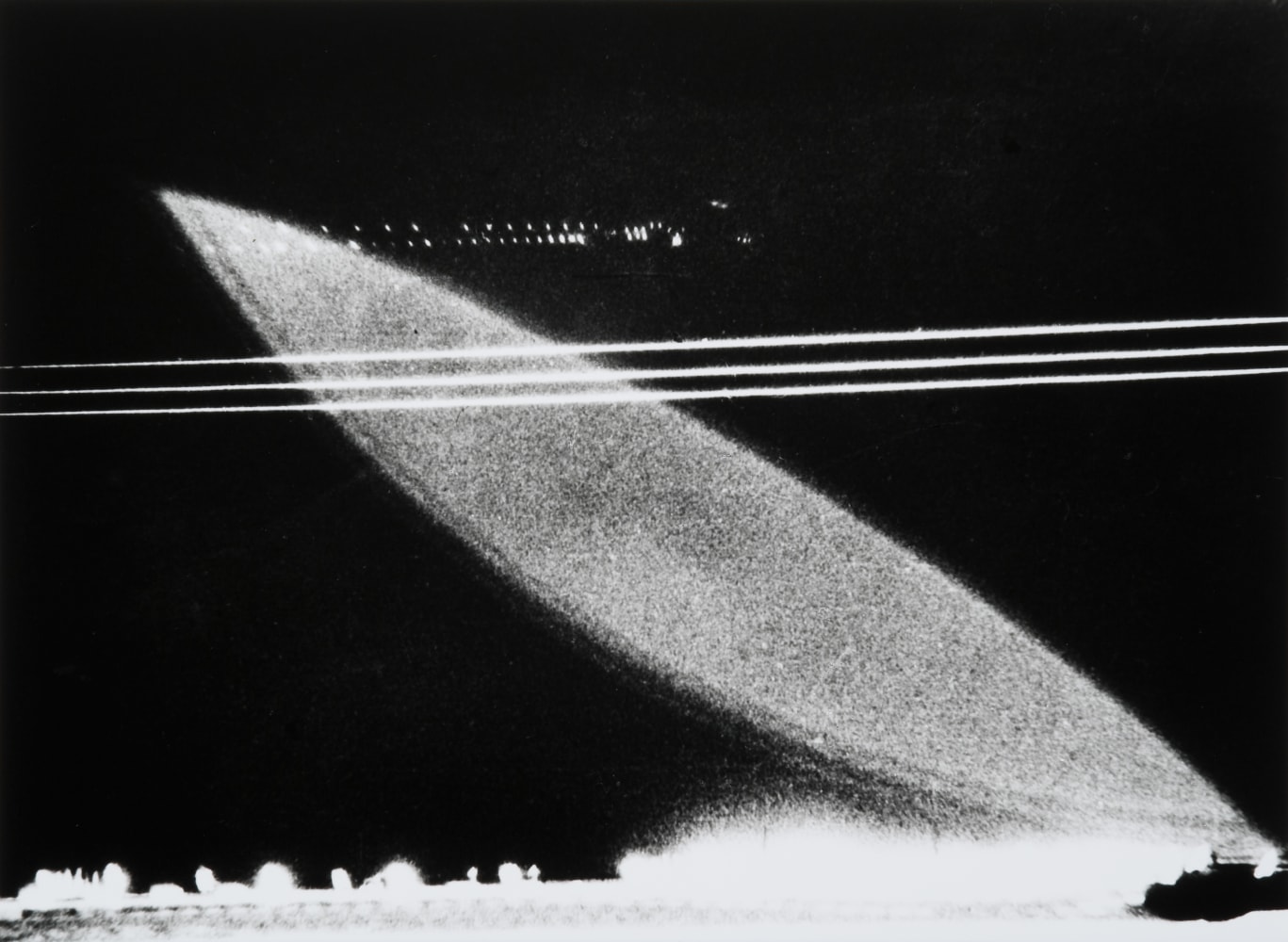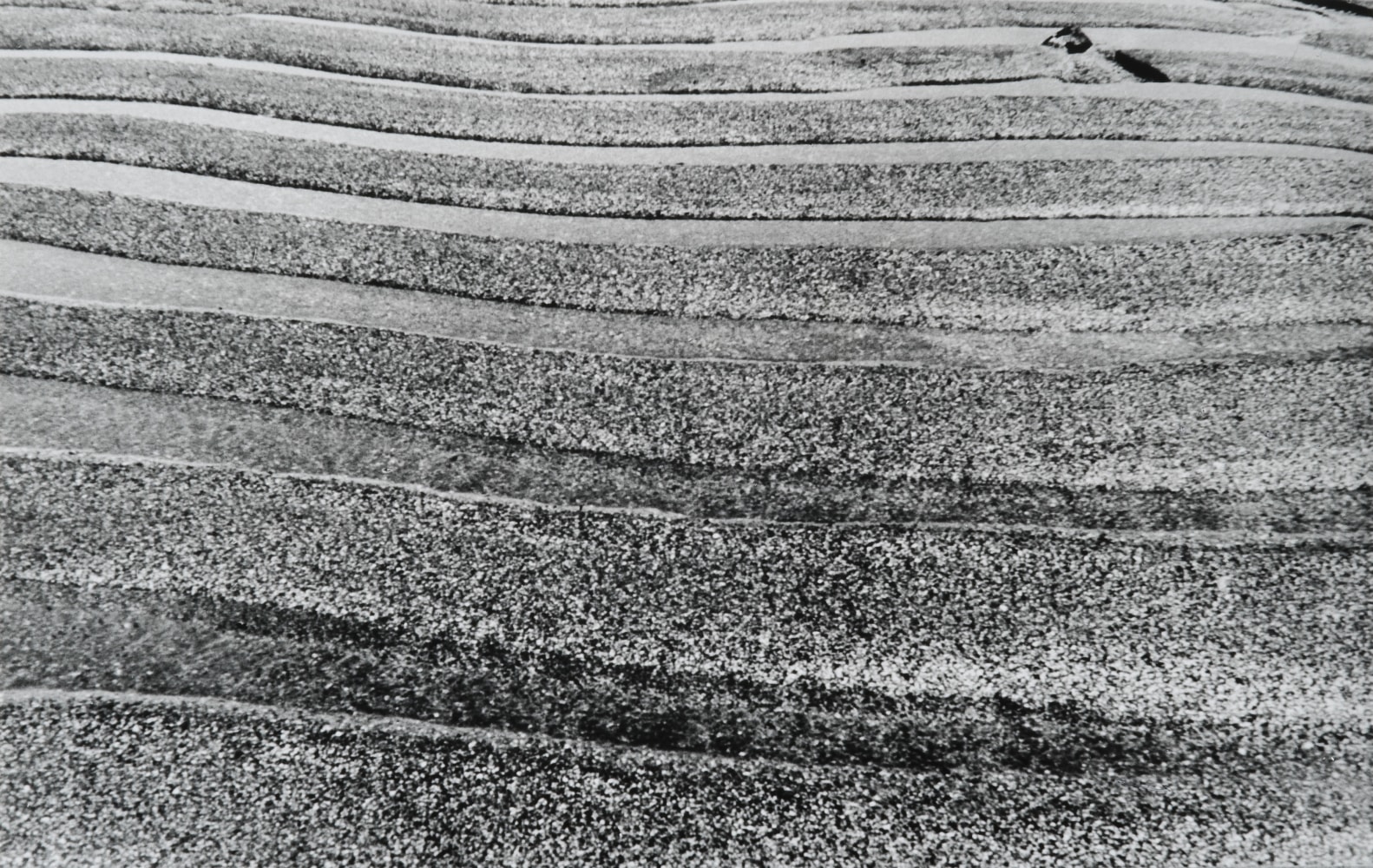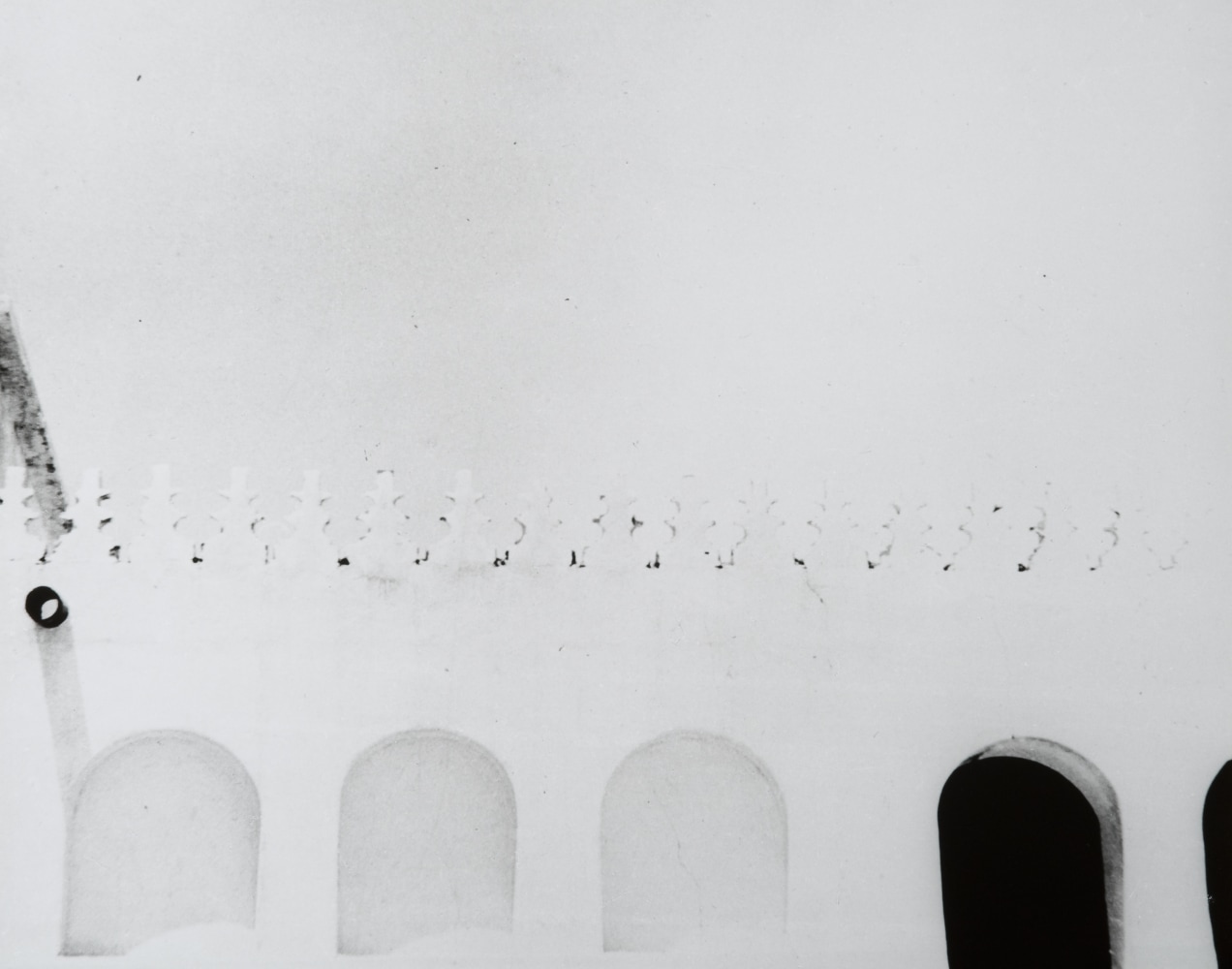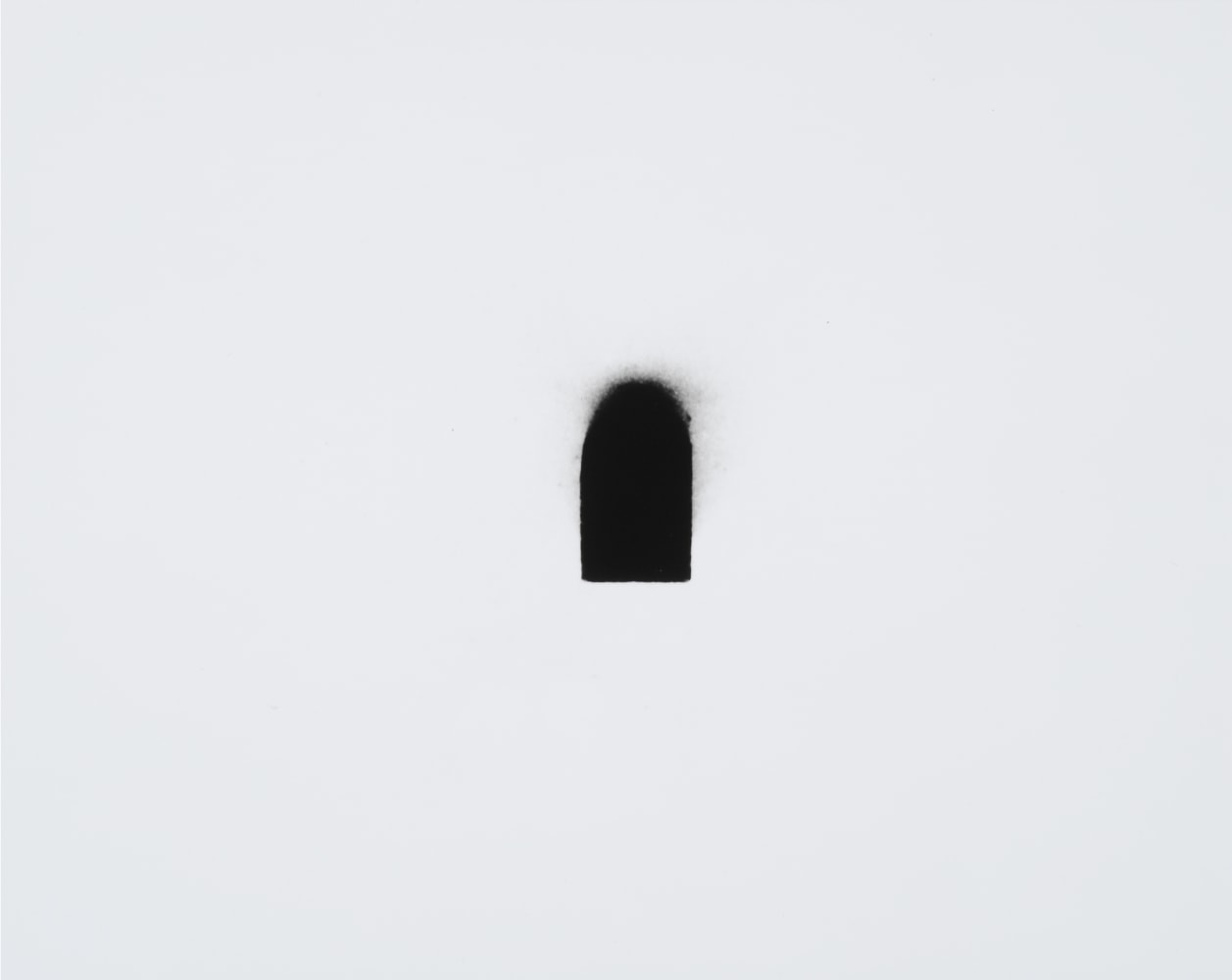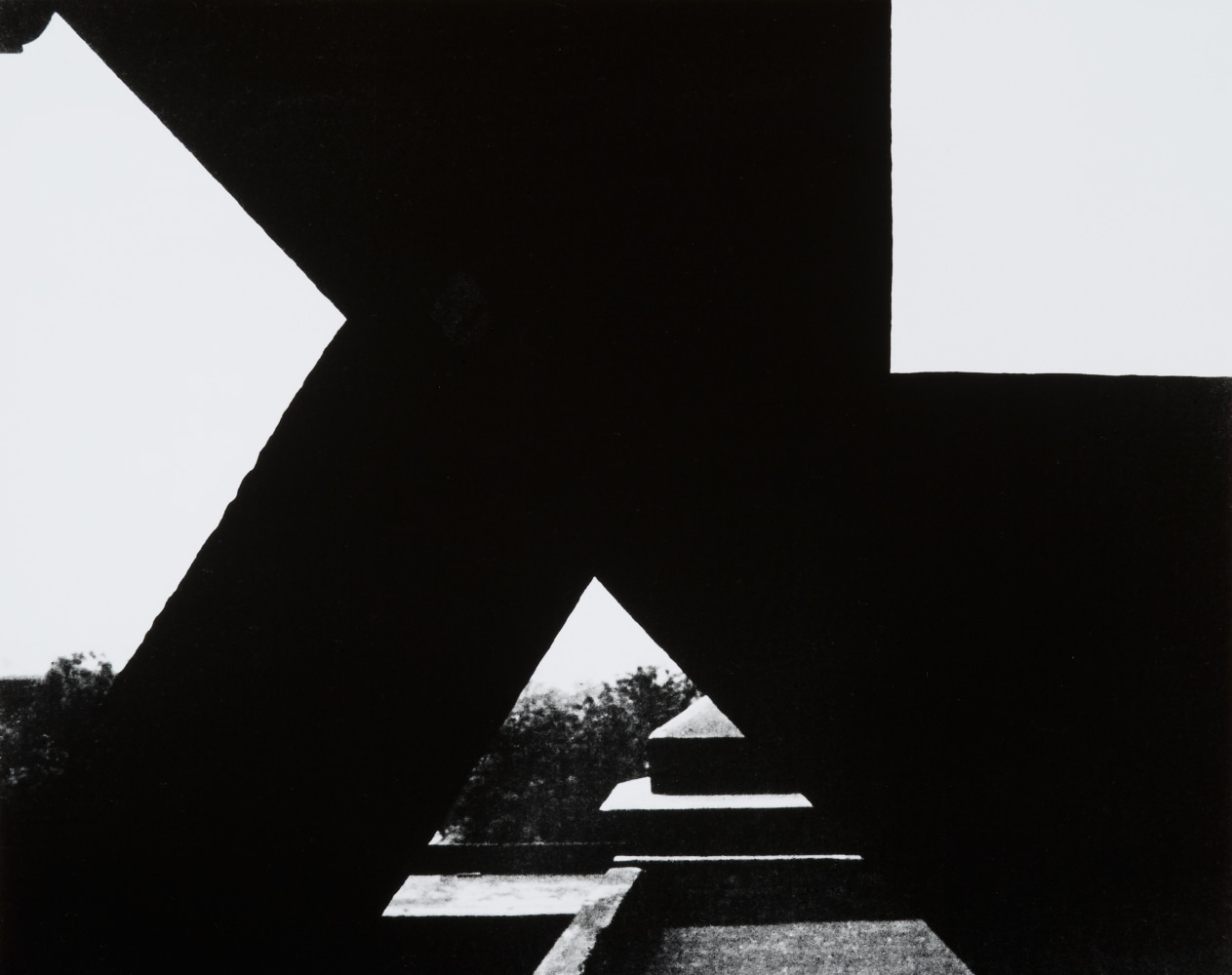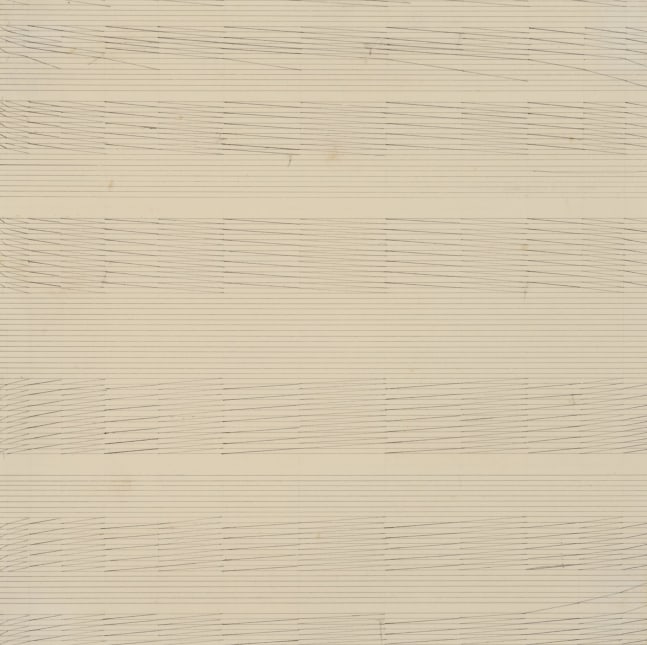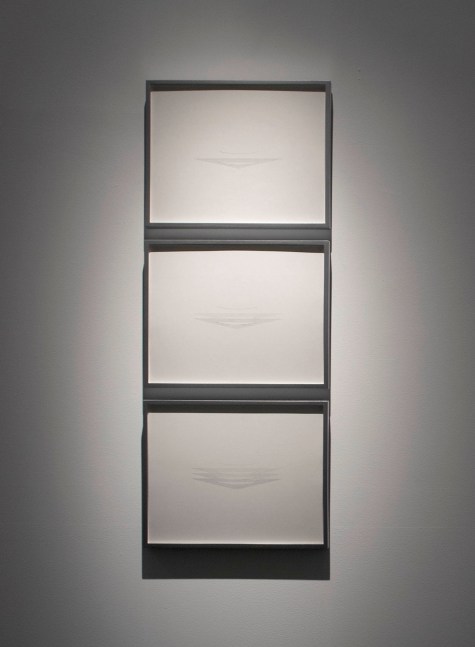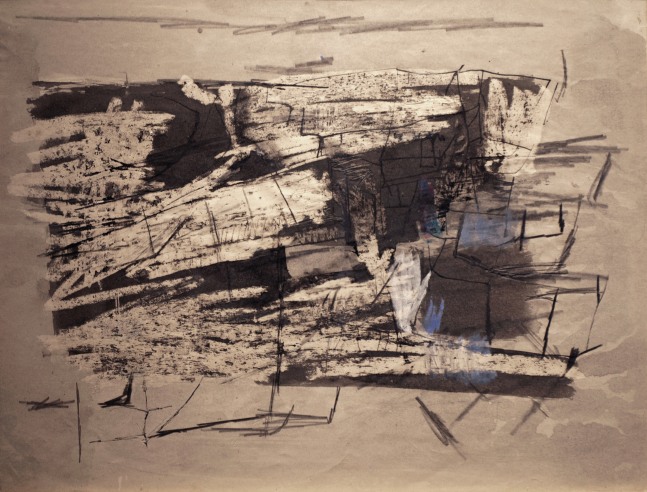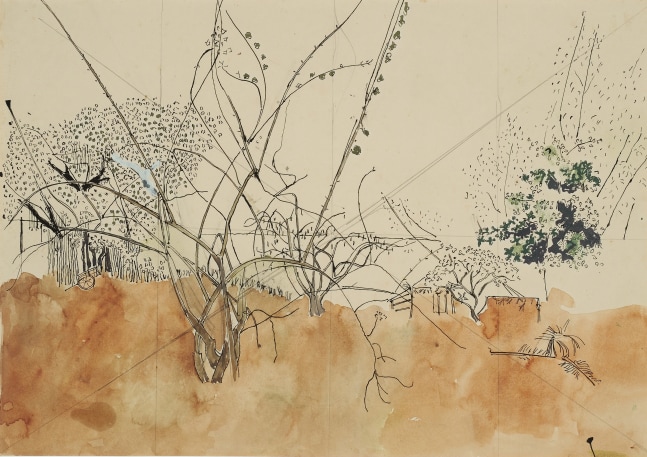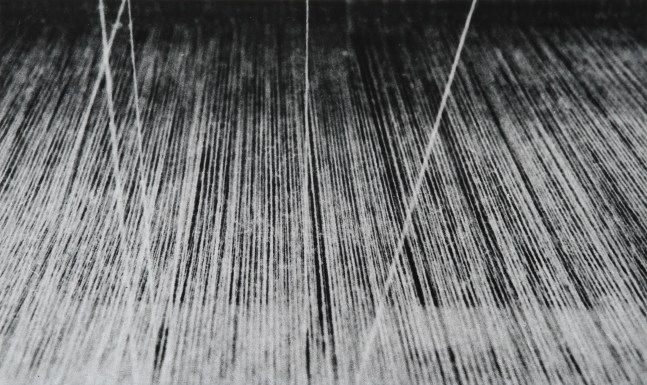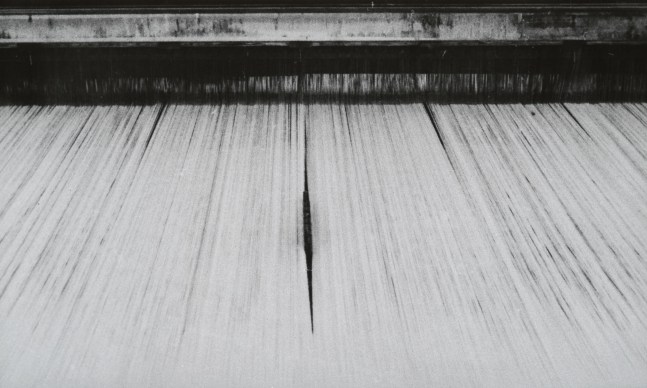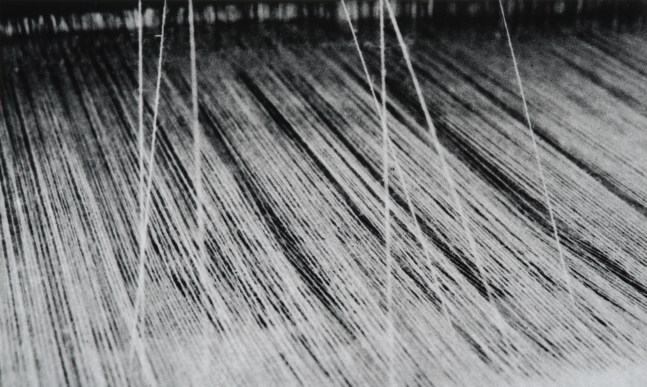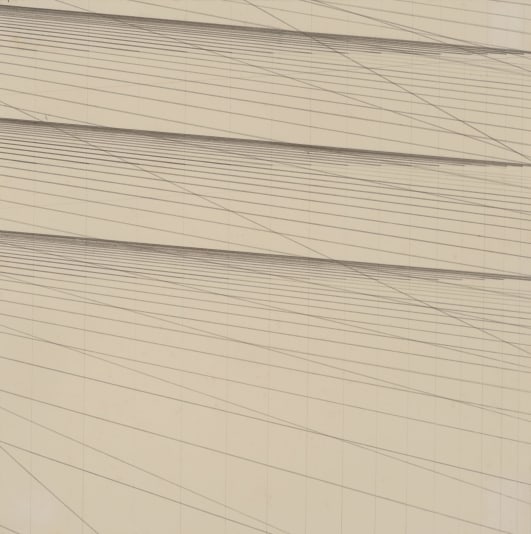
"…is a beautiful survey of the closely related drawings and photographs of Nasreen Mohamedi (1937-1990) of India, finally becoming known for her visionary, culturally inflected vision of Minimalism. The museum is on solid ground with its Mohamedi survey…"
HOLLAND COTTER, THE NEW YORK TIMES
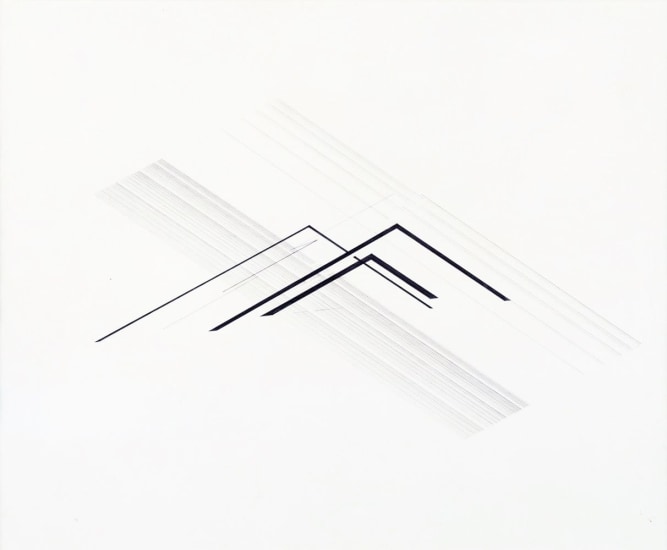
Untitled, ca. 1980s
Mohamedi mainly worked with gestures of pencil and ink on paper, experimenting with organic forms, delicate grids, and dynamic, hard-edged lines. Her cosmopolitan outlook enabled her to draw upon a range of aesthetic sensibilities, from the poetry of Rilke and Camus, as well as Indian classical music, to the modernist architecture of Le Corbusier's Chandigarh. Spanning Mohamedi's entire career and bringing together more than 130 paintings, drawings, photographs, and rarely seen diaries, the exhibition traces the conceptual complexity and visual subtlety of the artist's oeuvre.
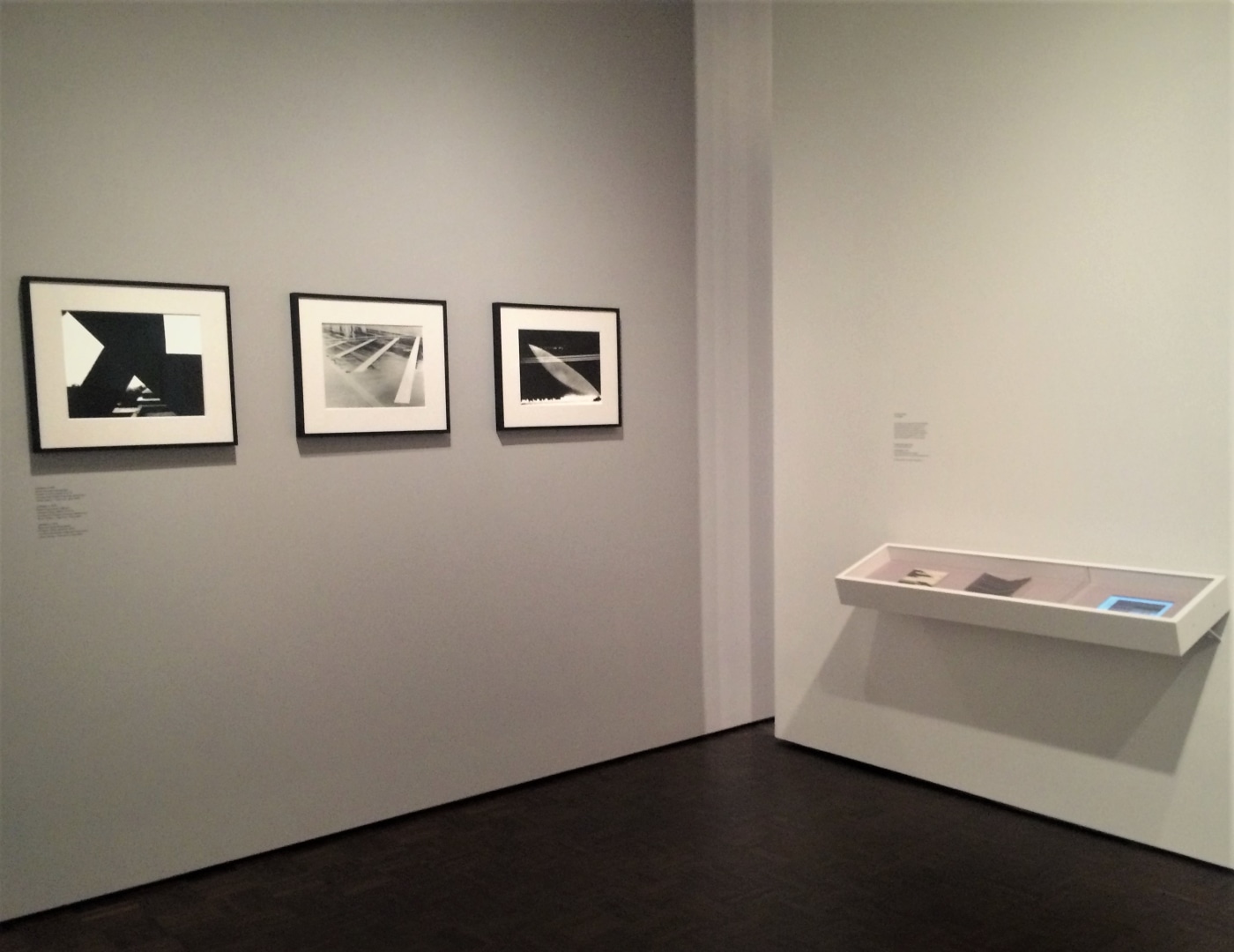
Exhibition View
“The poignant story of Mohamedi, a relatively little-known but significant artist, reveals a highly individual artistic quest, drawing on historic sources from across the world, alongside her evocative photography as an unexpected form of visual note-taking.”
Sheena Wagstaff
"Her fine-drawn linear planes floating in space, or shattering into cascades, feel both timeless and futuristic, calligraphic and architectural.
As with work by Agnes Martin, to whom she has been compared, Ms. Mohamedi’s art feels rounded-out and complete, but open-ended, too. Her last drawings, which must have demanded superhuman control, are of tiny spaceship-like chevrons shooting into deep space…"
THE NEW YORK TIMES
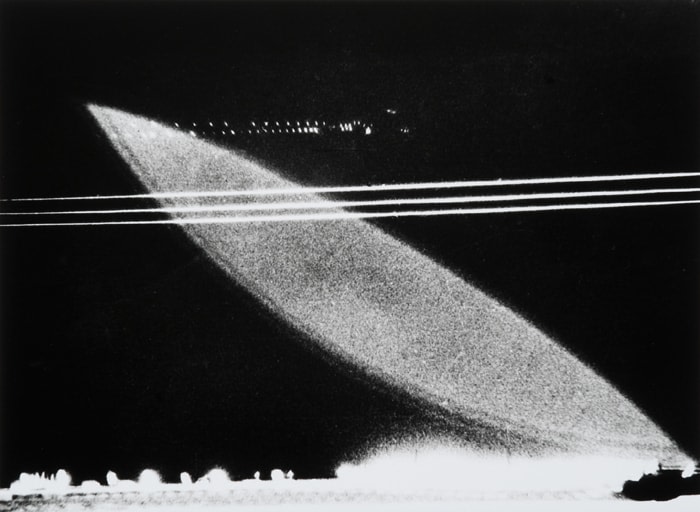
Untitled, ca. 1975
"It is a remarkable gathering of exquisite yet robust photographs and drawings by Nasreen Mohamedi.
Some float on the page like a gossamer veil. They are infused with the rhythm of a Bridget Riley, the playfulness of Piet Mondrian and the lyricism of an Ellsworth Kelly line leaf drawing..."
APOLLO
"On the second floor is a retrospective of the esteemed Indian artist Nasreen Mohamedi (1937-90), who is virtually unknown in the United States. With an extensive array of paintings, drawings, photographs and diaries on view here, one can follow the development of her distinctive version of geometric abstraction.
That the curators have begun with such a serious body of work in a presentation that avoids spectacle is a statement in its own right. It also sets them up to exhibit modern art from different places in a way that frames modernism not as a chronological sequence of Western ideas that can only be imported colonially or imposed imperially, but as an anachronic relay of international practices in complicated conversation…"
LONDON REVIEW OF BOOKS
"… Mohamedi was a great artist. She was increasingly audacious in her experimentations with space, and in the late 1970s and early ’80s she abandoned grids and vanishing points. Her work took on a new intensity, suggestive of movement and spirit, and an almost transcendent idea of pure vision."
THE BOSTON GLOBE
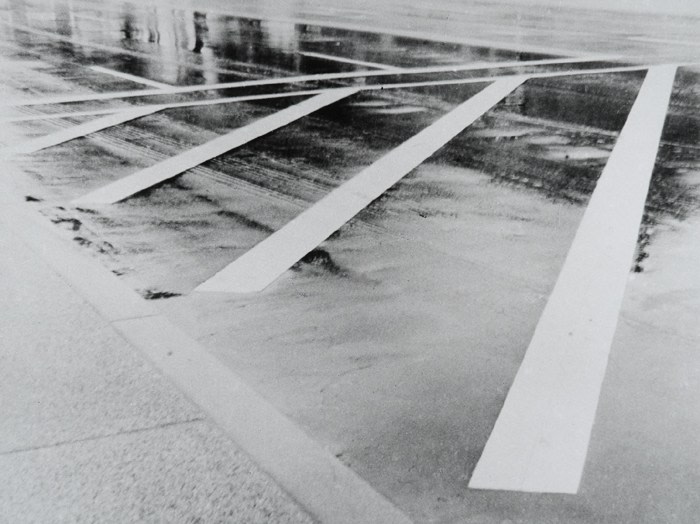
Untitled, ca. 1975
"Mohamedi is often compared to Martin, though I believe that comparison is superficial at best. Martin’s work is nearly always a gestalt that can be summoned to mind visually even if only approximately as a simple grid with shadings, dots, etc. By contrast, Mohamedi’s work is altogether too complex and varied within the comparison itself to be summoned to mind like a gestalt…"
THE HUFFINGTON POST
"For that, spend time with the Mohamedi show, which is magnificent. The artist, who died in 1990, used drafting equipment to create works of astonishing subtlety, faintly traced pencil drawings that have both architectural and musical overtones. Small deviations from perfect regularity set up cascading patterns, as if an Agnes Martin painting began pulsing like the ripples on the surface of a pond."
The Washington Post
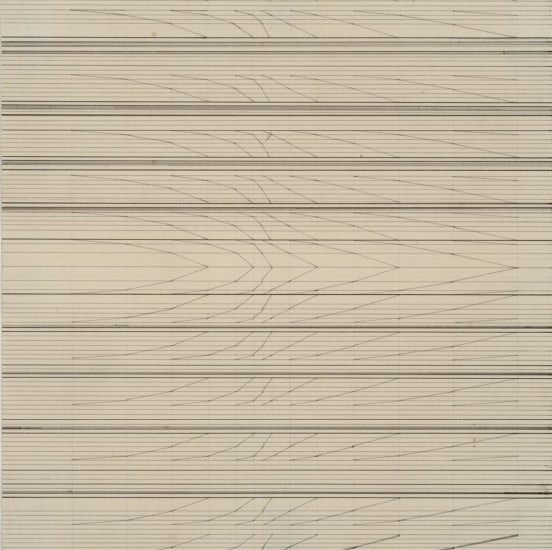
Untitled, ca. 1970s
"Another section of the Met Breuer is devoted to an exhibition of the work of the Indian modernist artist Nasreen Mohamedi, whose extraordinary works bespeak a combination of precision and strength, delicacy and power, further enhancing the sense of subtle connection between the architecture and the art…"
Vanity Fair
"The exhibition of Mohamedi’s delicate, exacting, wordless drawings, elegantly installed in the low-ceilinged Breuer building and accompanied by impressive photographs and notebooks, does precisely what Wagstaff was brought in to do: it rewires the history of modernism into something more complex and more simultaneous than the flow-chart progression many western museums still often indulge…"
THE GUARDIAN
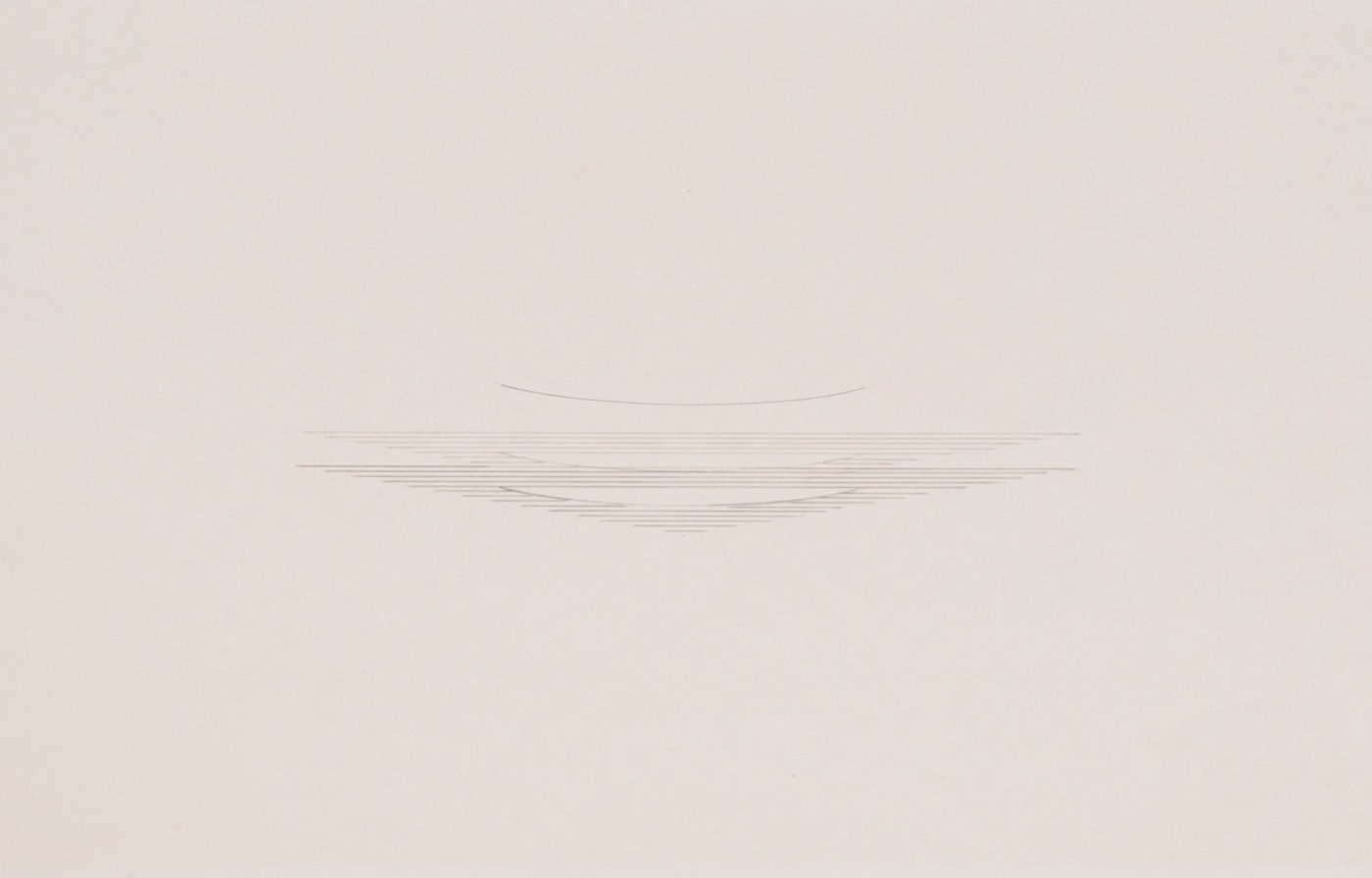
Untitled
"Even more encouraging and heartening is the choice of artist for the first solo presentation at Met Breuer. Nasreen Mohamedi (1937-90) was a minimalist of exquisite poise, rigor and resoluteness. This comprehensive retrospective focuses on her graphic works and monochrome paintings. The quiet austerity of her vision is the perfect complement to Breuer’s dignified architectural understatement. But more significant is the defiance of marketing expectation on the part of the Met’s curators in choosing a relatively unknown artist from outside the international mainstream and contemporary fashion: “difficult” art in “slow” mediums. It signals, let’s hope, that Met Breuer is to be placed at the service of the best that museum scholarship can come up with, defeating any sense that modern and contemporary equals flashy and populist…"
ARTCRITICAL
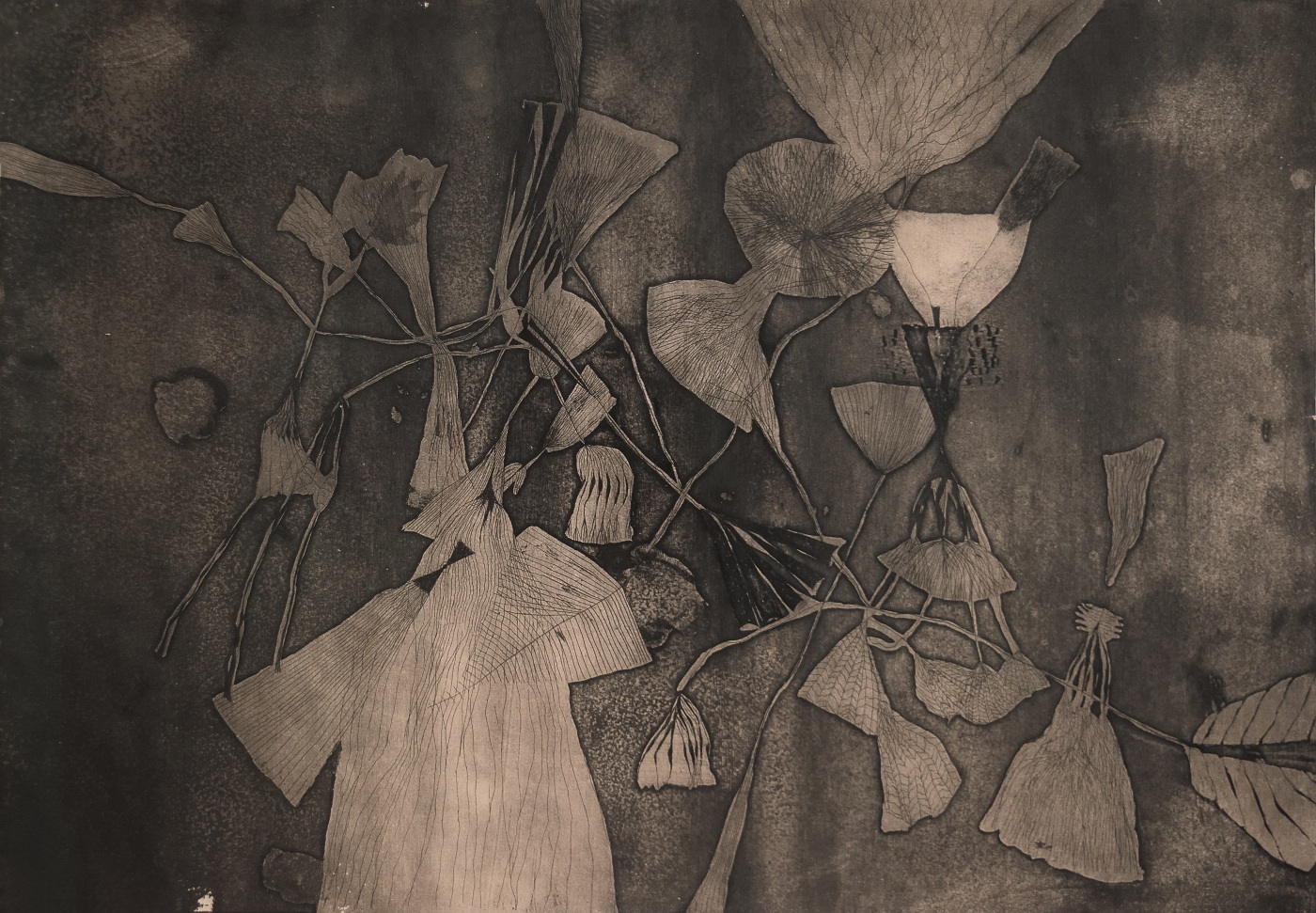
Untitled, ca. 1965
"A retiring presence in Indian art during her life, Nasreen Mohamedi is now at the center of global issues of contemporary art.
Mohamedi emerged in the wake of the first generation of Indian artists to gain recognition on the international scene and quickly defined a pristine, profoundly meditative approach to abstraction that both isolated her from most Indian art of her time and earned her a place among the leading artists of the late 20th century.
Mohamedi’s independent photographs evince a developed sensitivity to the beauty of barren landscapes and the power of an eccentric viewpoint to turn a mundane scene into a tautly structured composition. Inspired by patterns of shifting sands, breaking waves, and scintillating light, she soon translated these phenomena into drawings—throbbing grids of fluctuating lines. Their radical austerity far surpasses the relative naturalism of her mentors and connects to her roots in Islamic traditions of abstraction…"
THE WALL STREET JOURNAL
"The photographs are particularly intriguing, making explicit some of the delicate architectural suggestions of the drawings. All Mohamedi needed to make an image was a basic geometrical idea, which her camera often detected in landscapes that were otherwise arid and ugly. There’s something immeasurably touching about the way her camera found beauty in the world, and her drawing concentrated that beauty into something entirely new; the photographs don’t ground her abstraction in the world, but connect it to worldly ideas, like kindness, gentleness and delicacy..."
The Washington Post
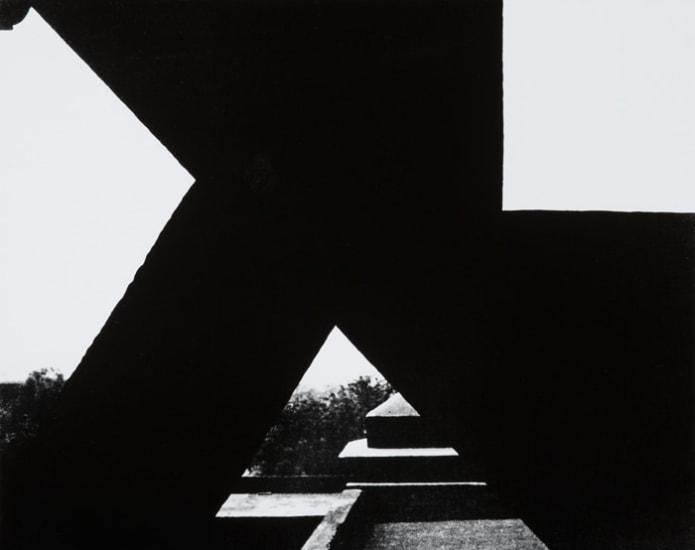
Untitled, ca. 1970s
"Little known in her lifetime, she has become an emblem of Modernism’s global reach and of the currents flowing outside western capitals.
In her monochrome, quietly utopian world, diagonals slice across white paper like the contrails of jets flying in formation. Lines intersect, form nodes, and make waves. They cast shadows and coalesce into hovering forms. In her photographs of pavement stripes, coastlines and walls, she is always alert to the world’s mysterious rhythms.
The more her body betrayed her, the more exacting she became, as if to insist that random suffering could be palliated by the discipline of beautiful geometry…"
FINANCIAL TIMES

